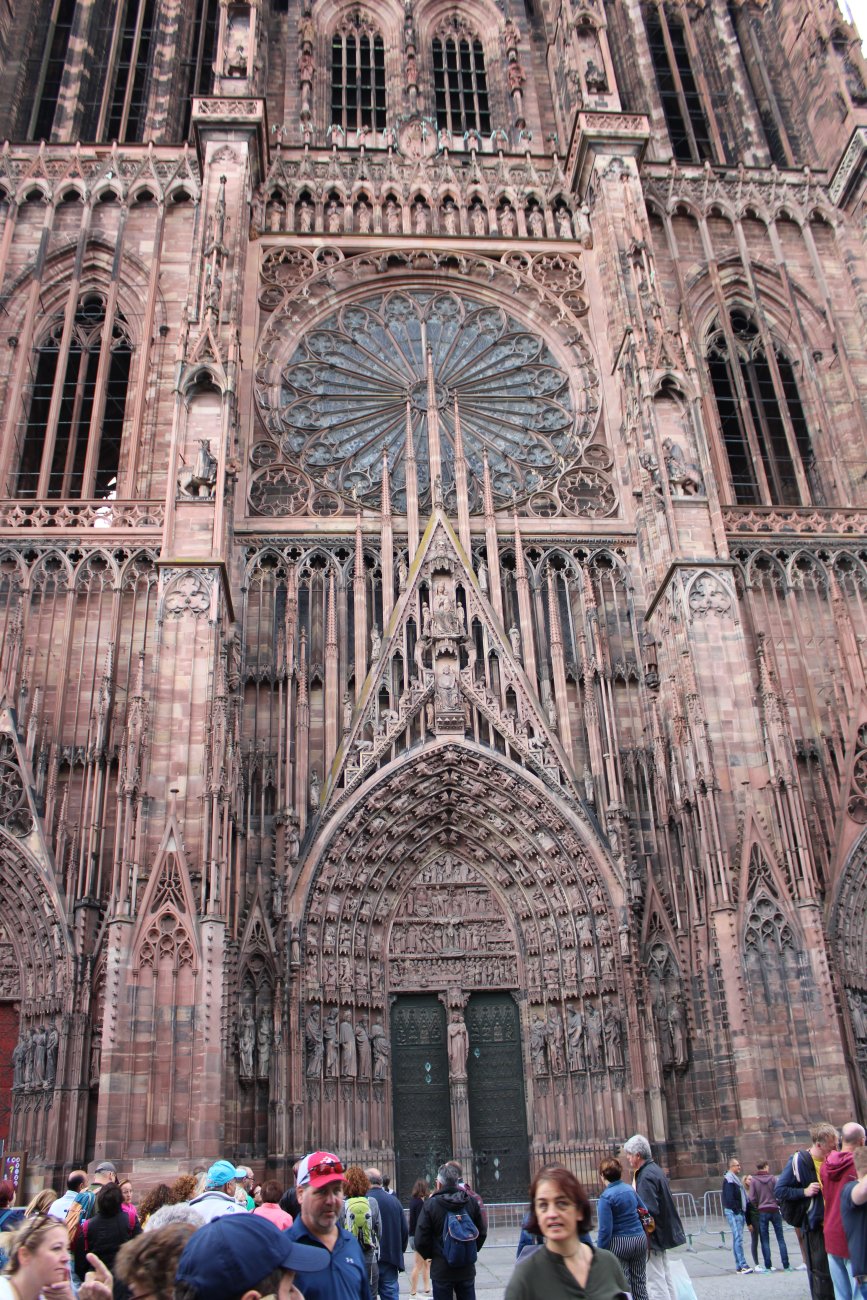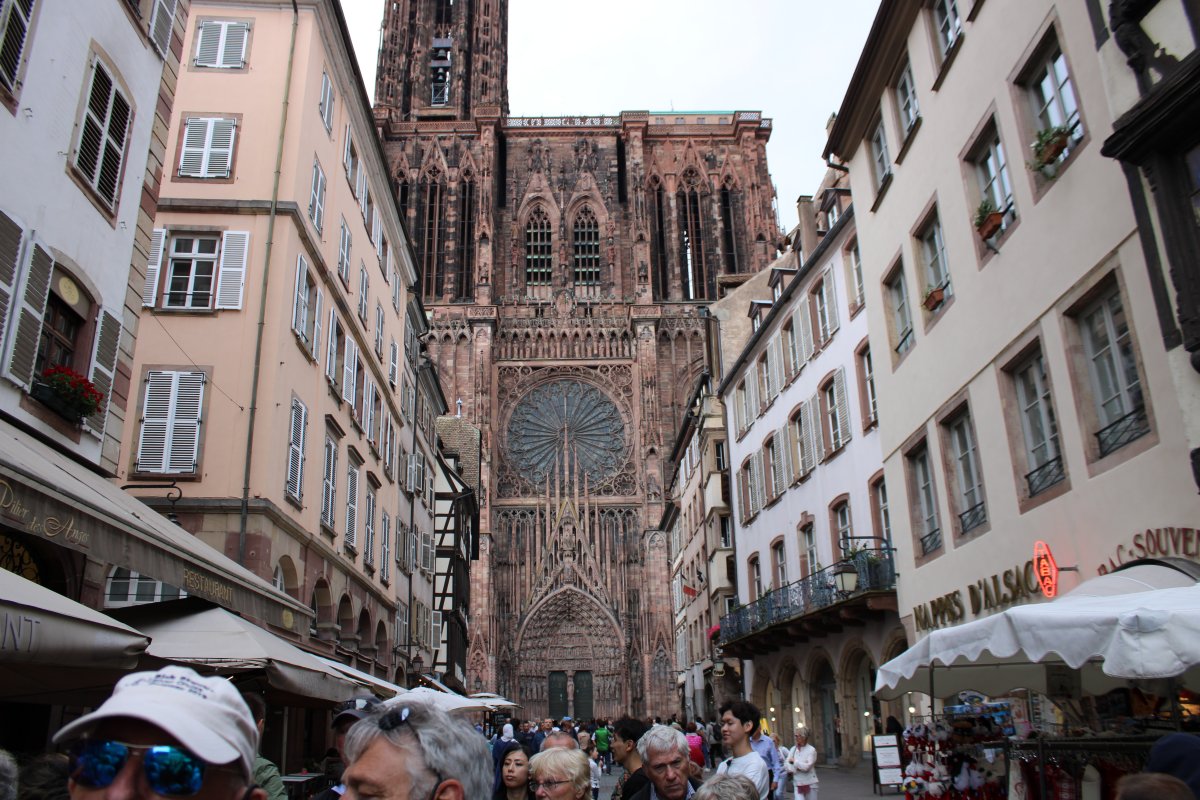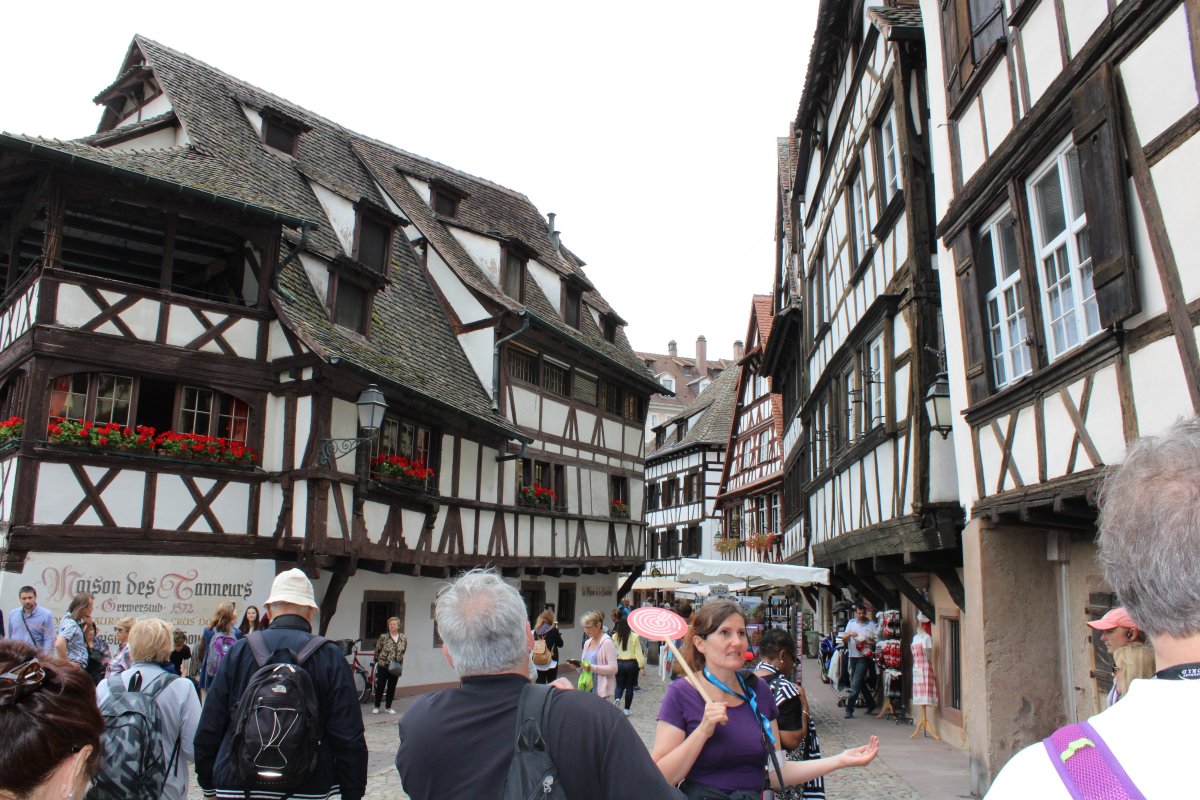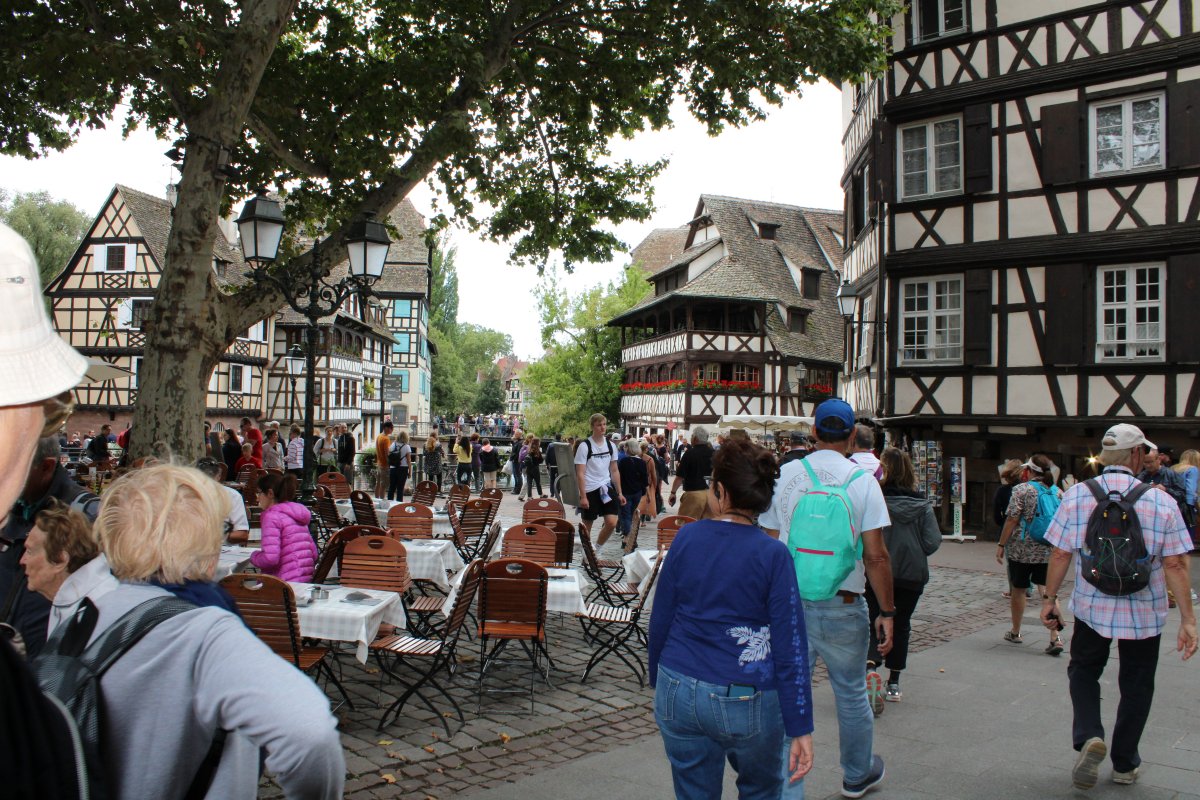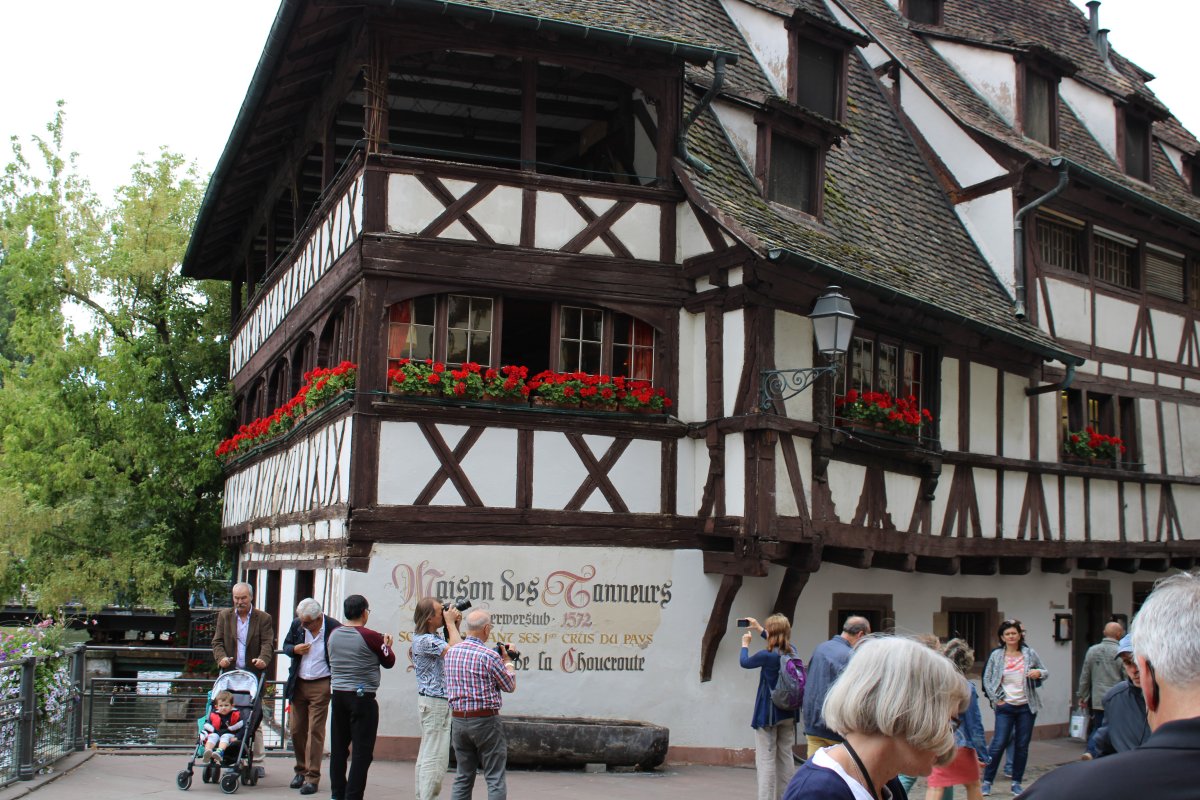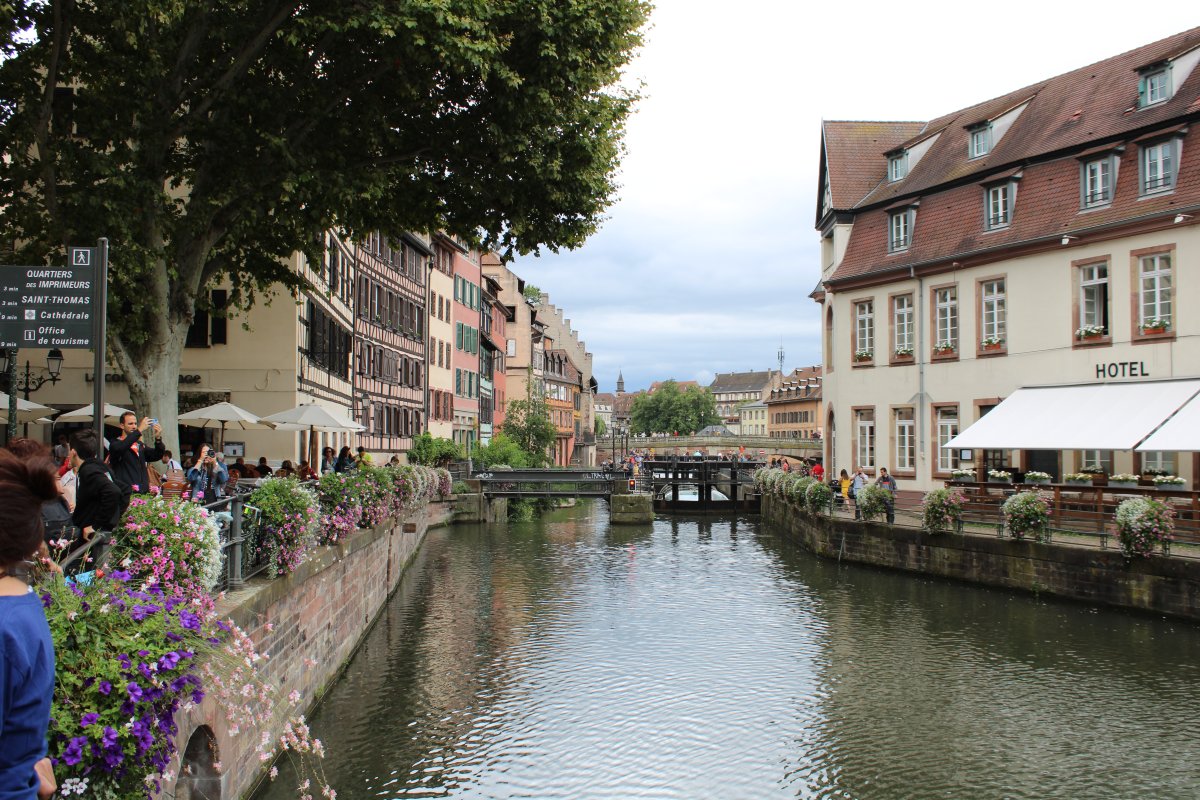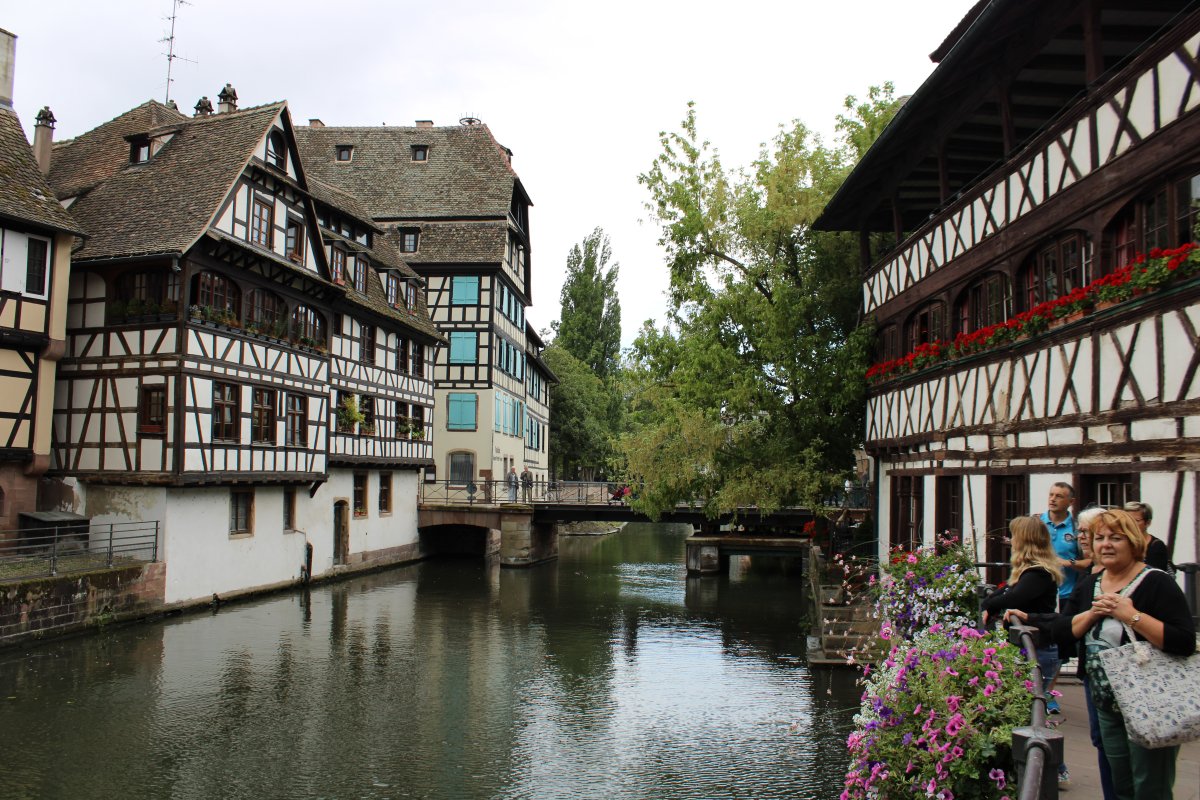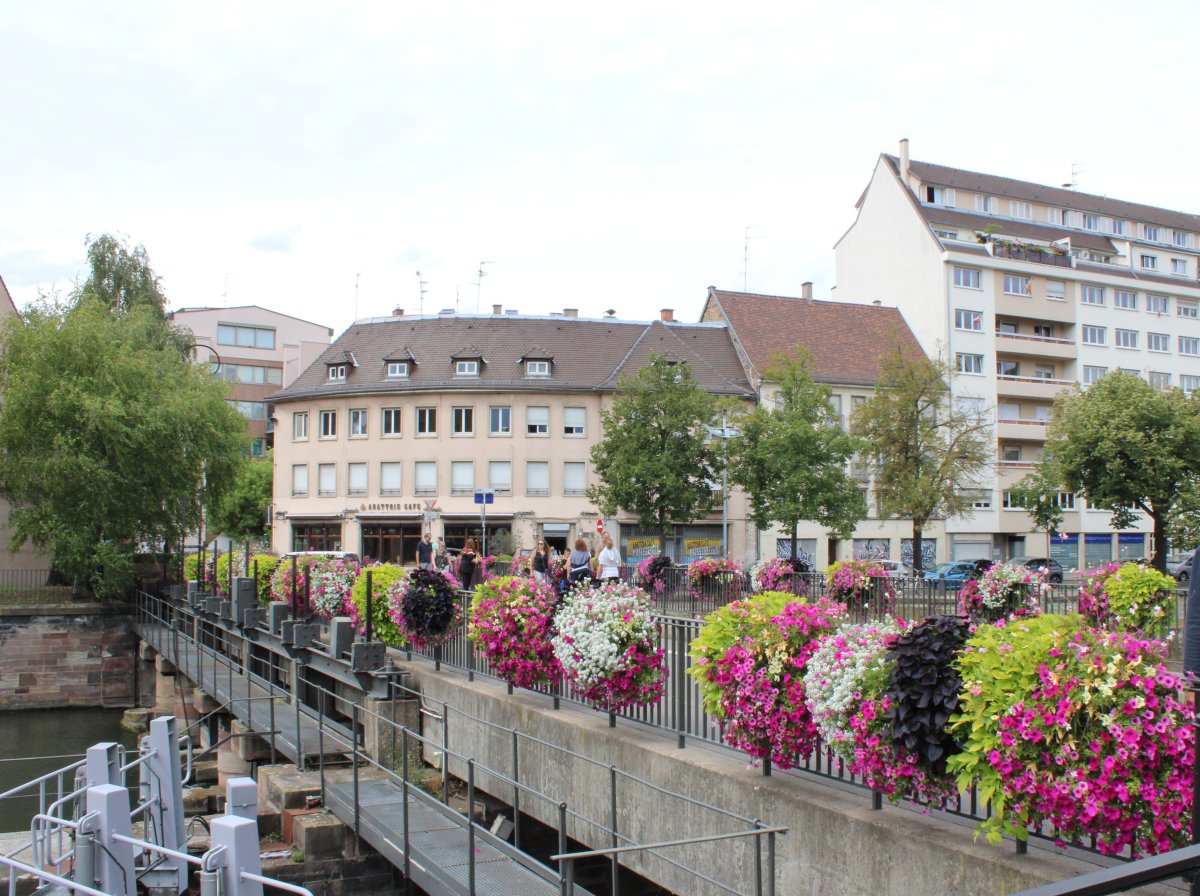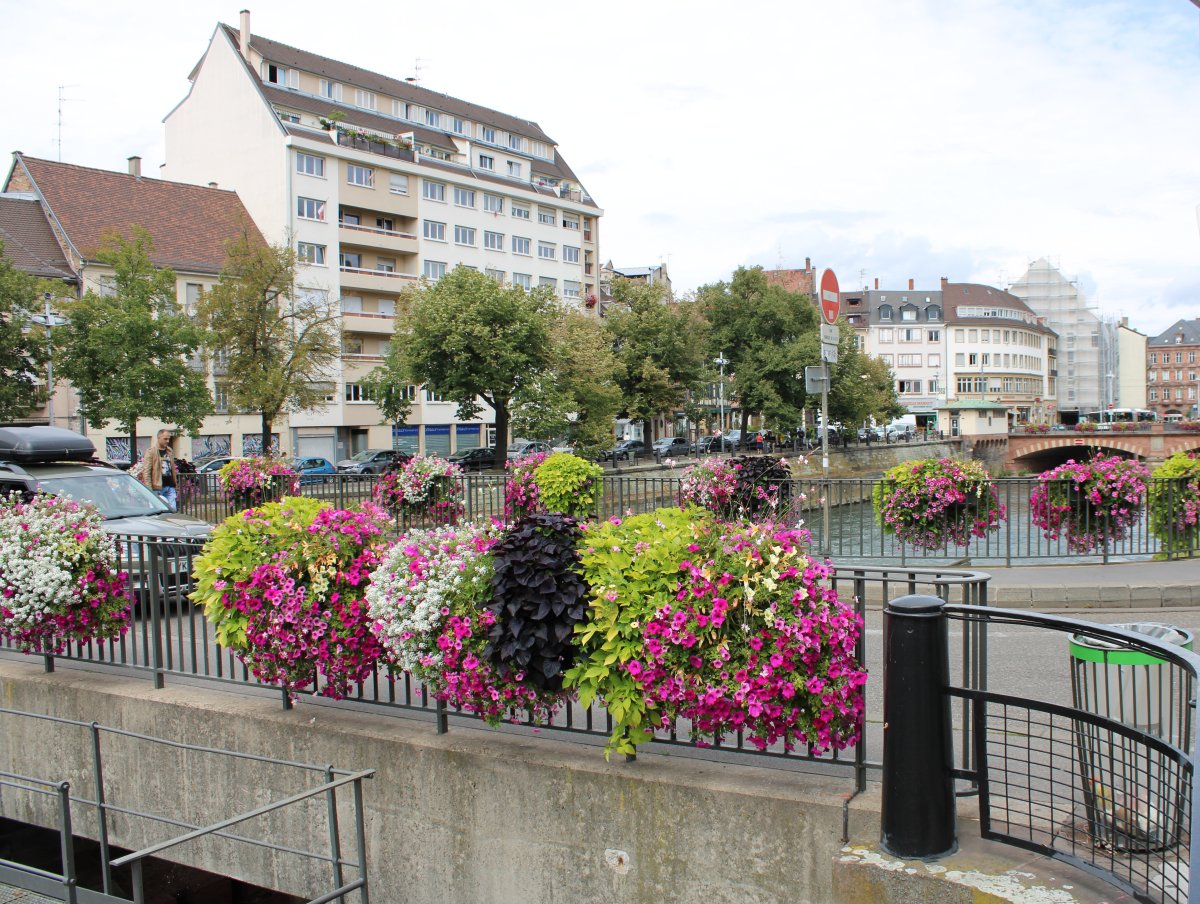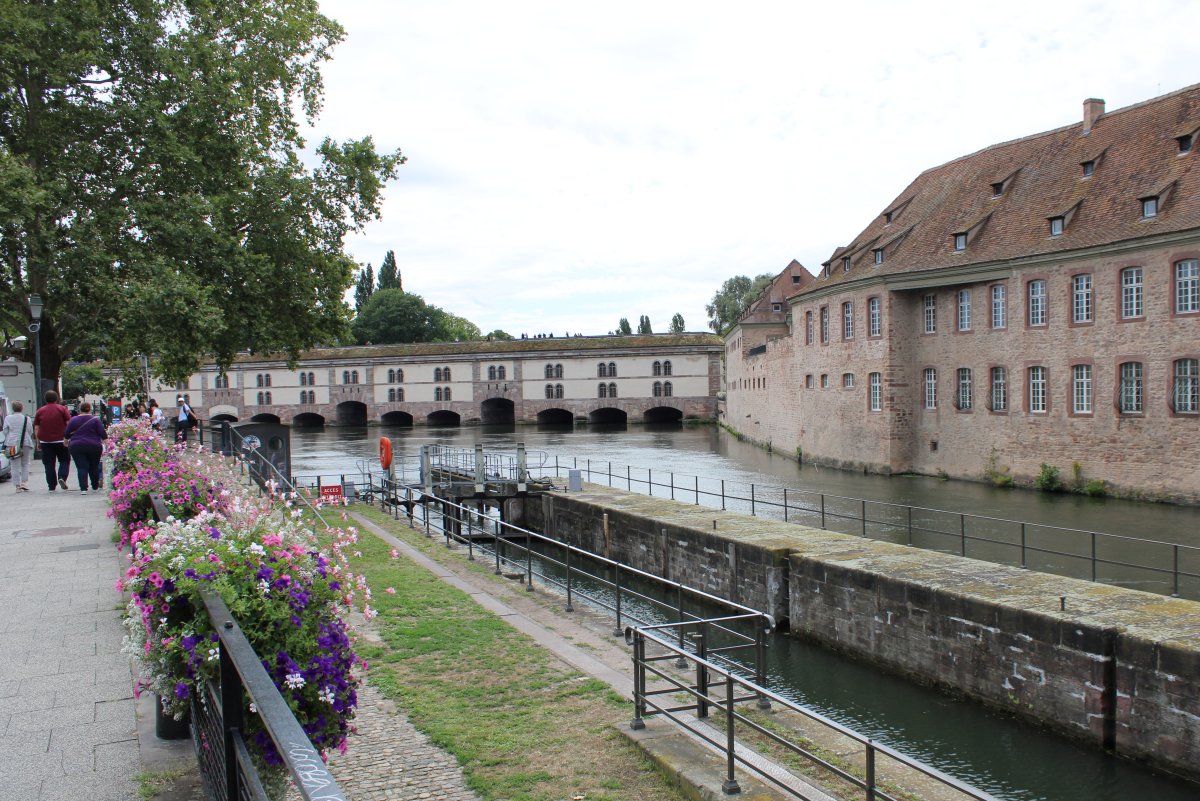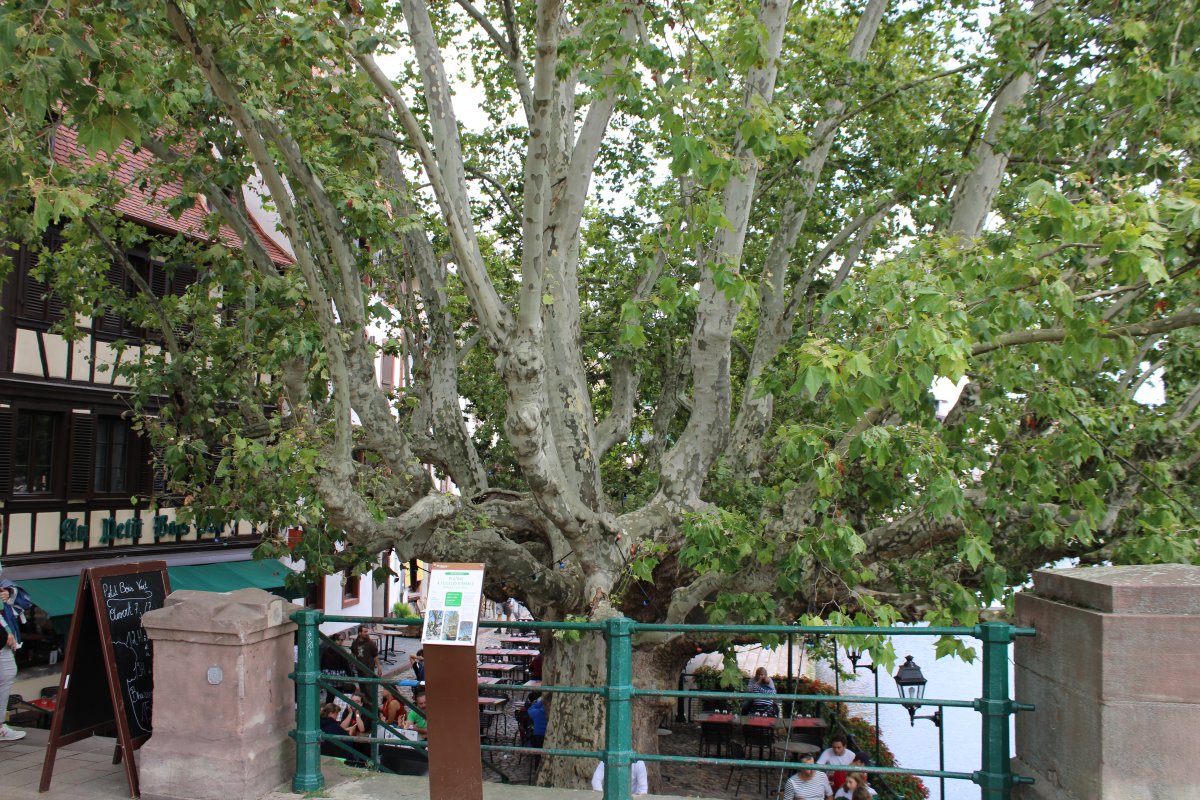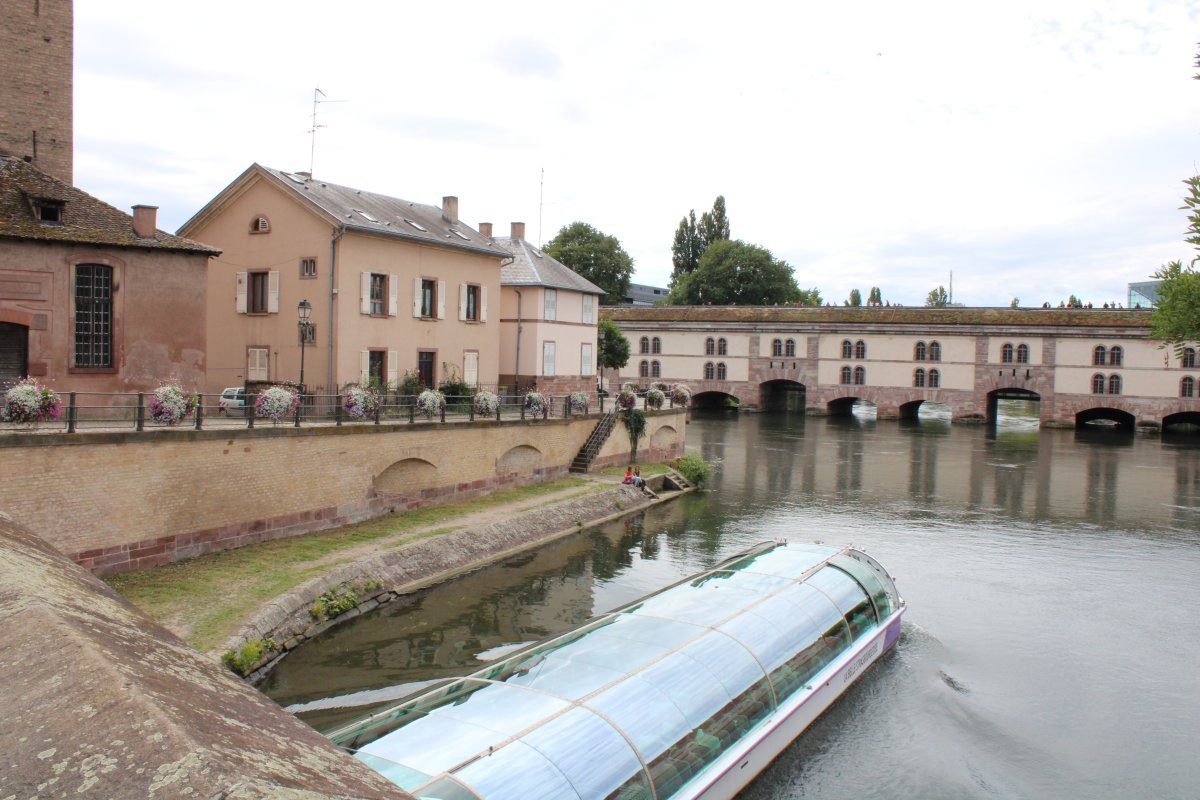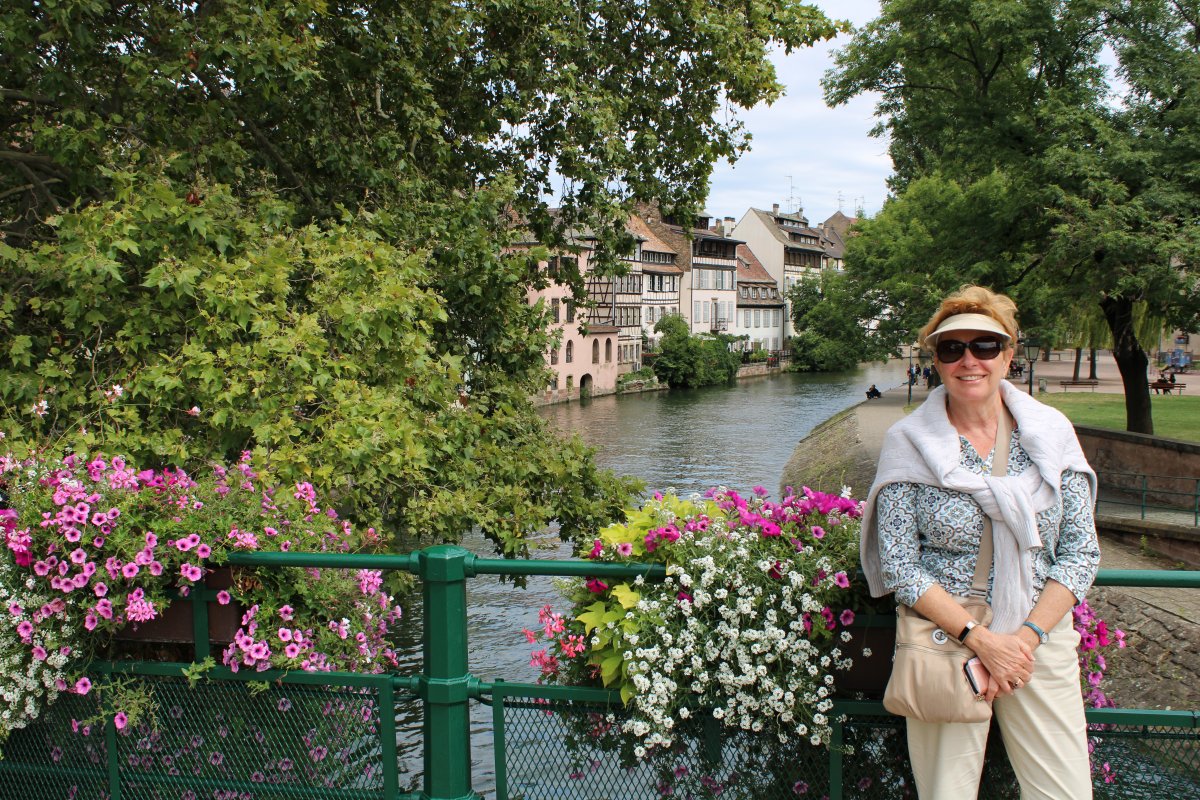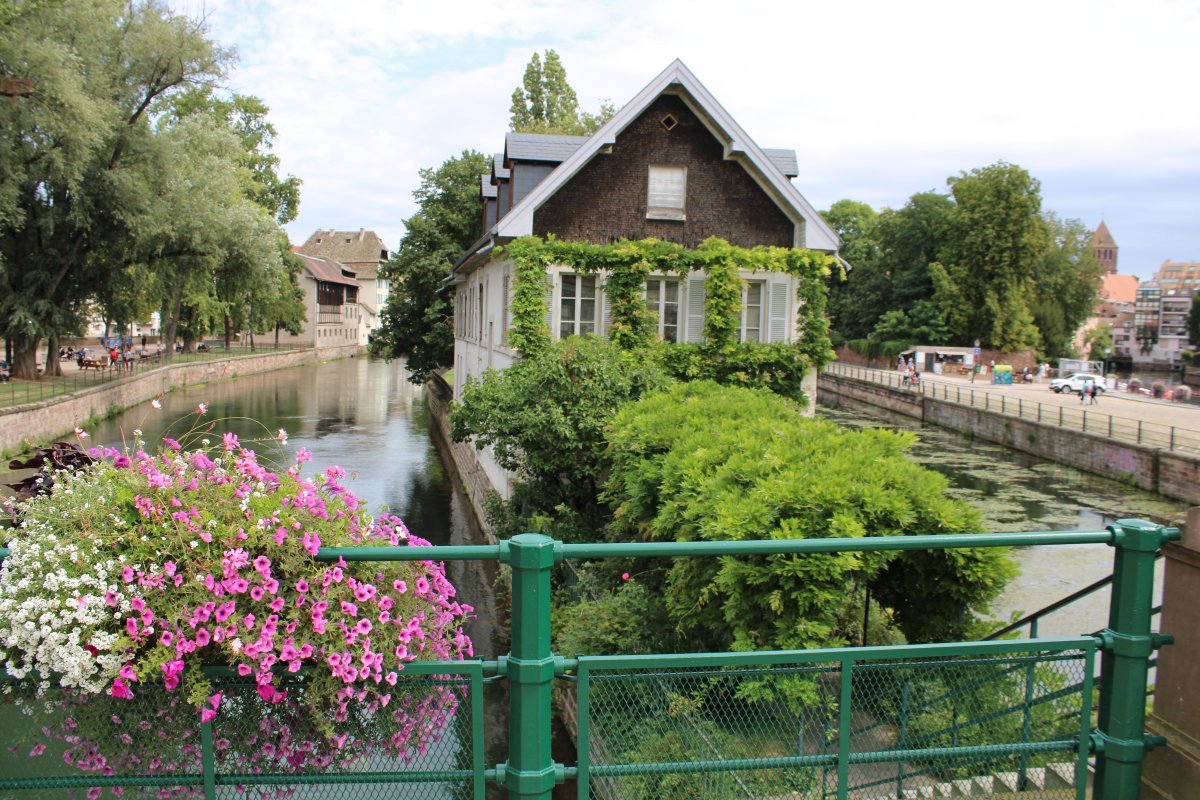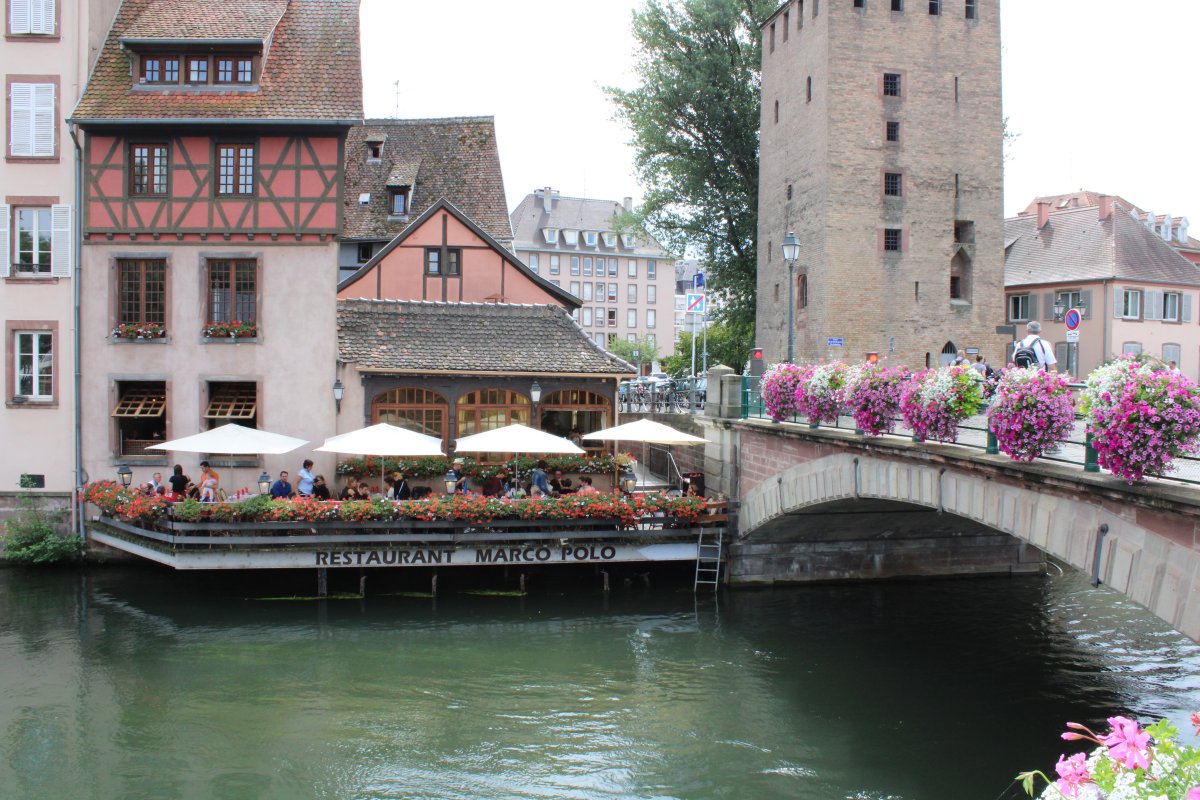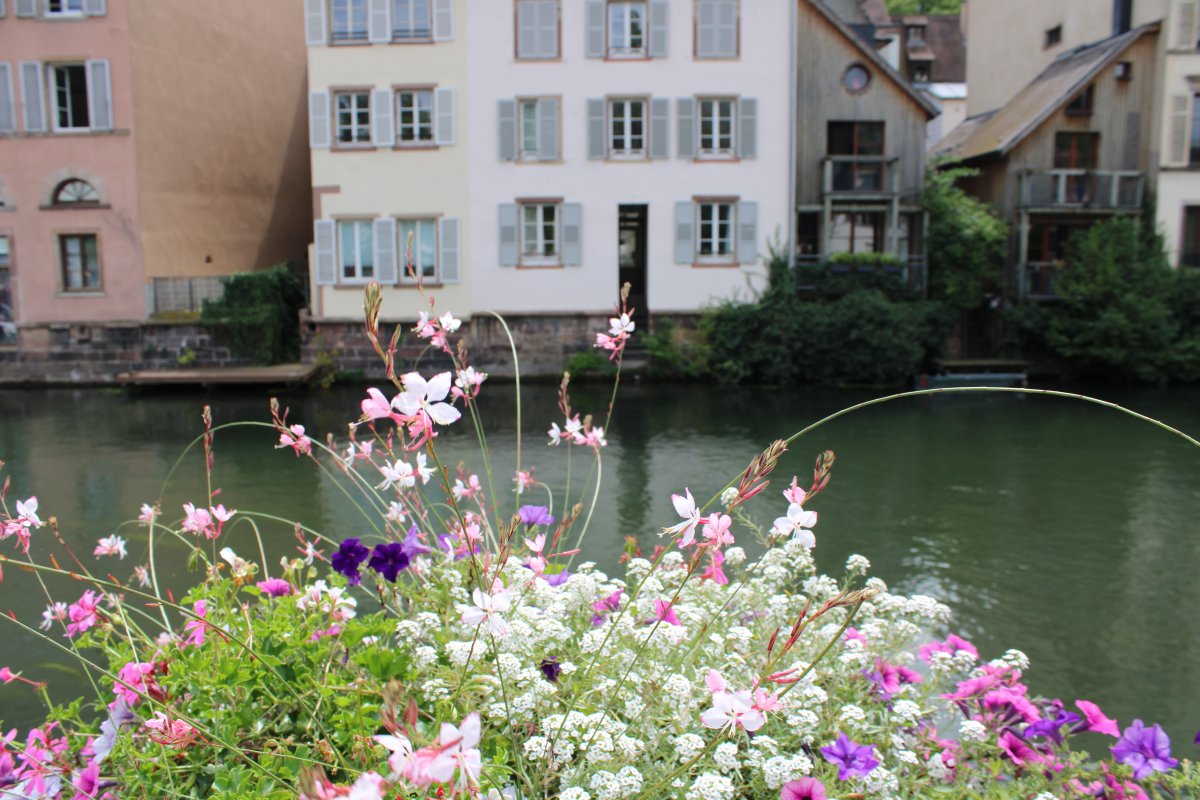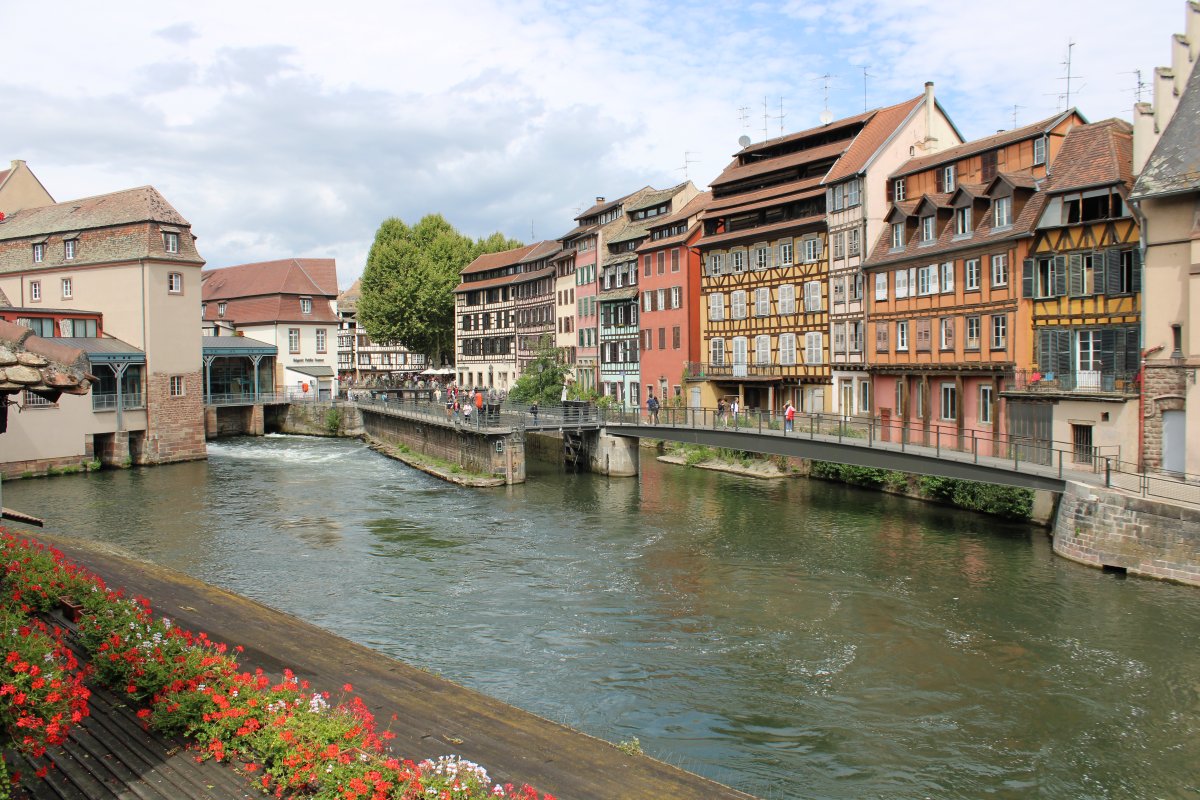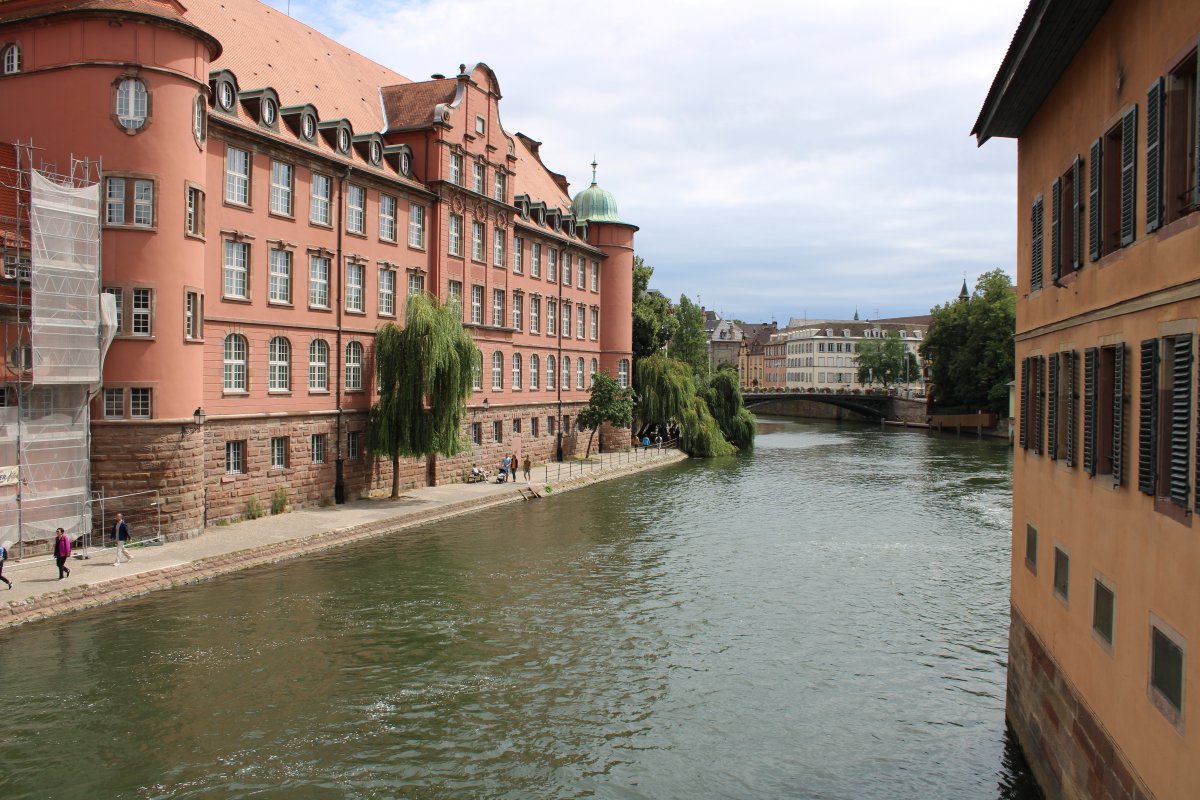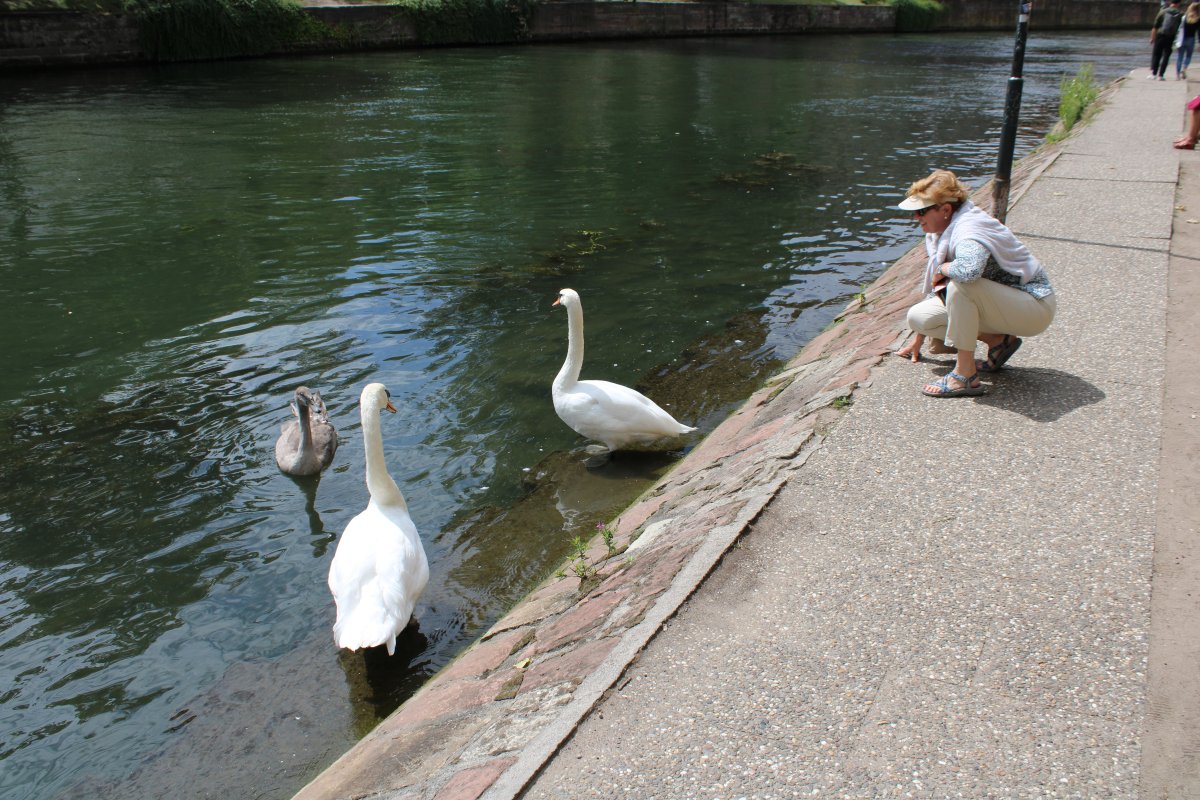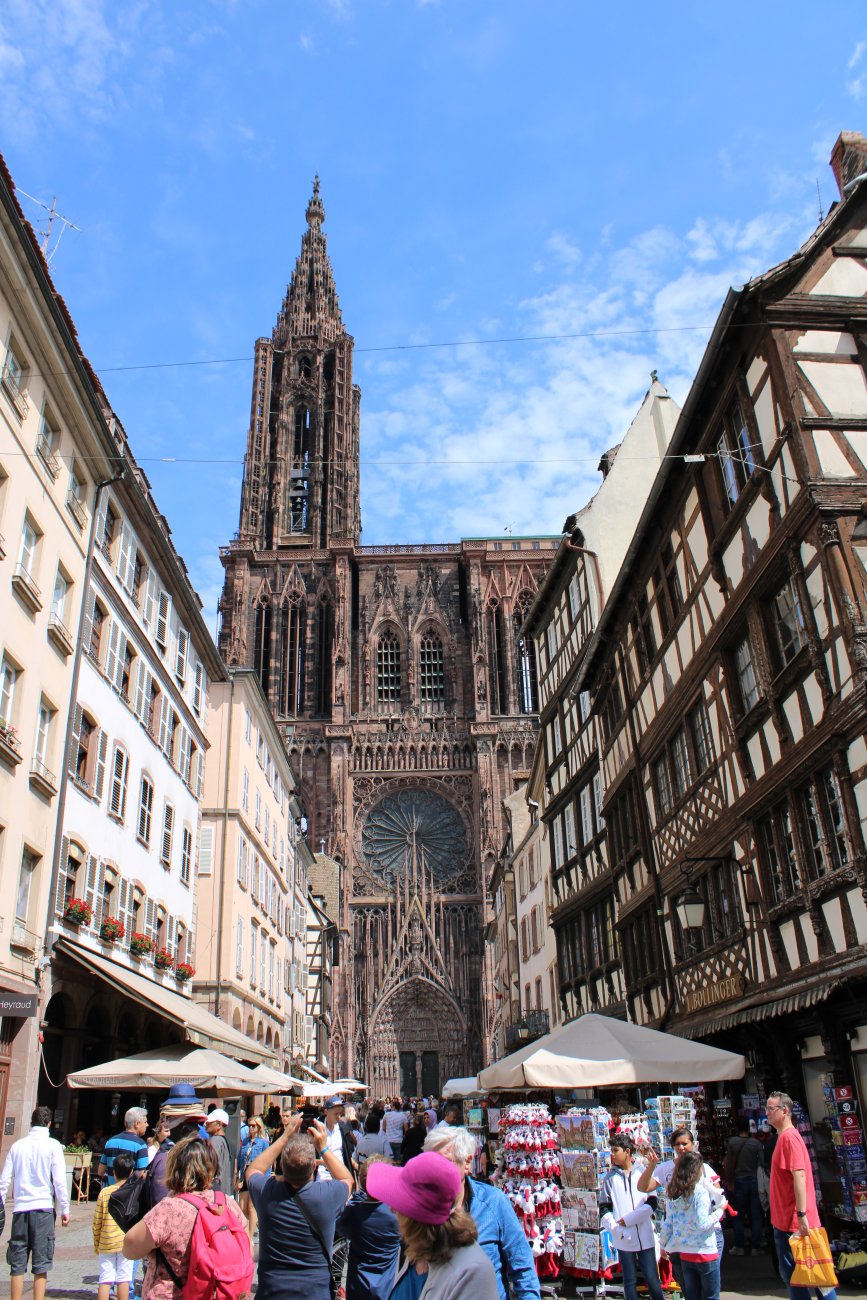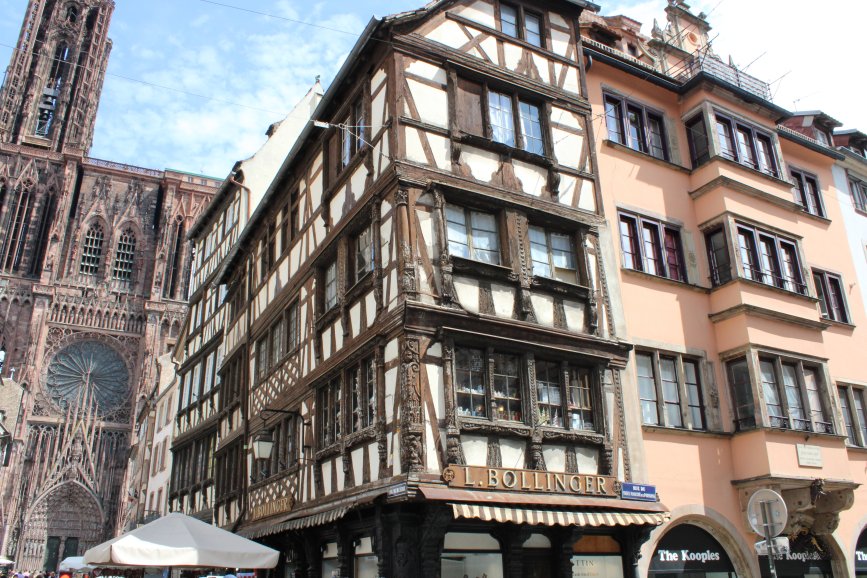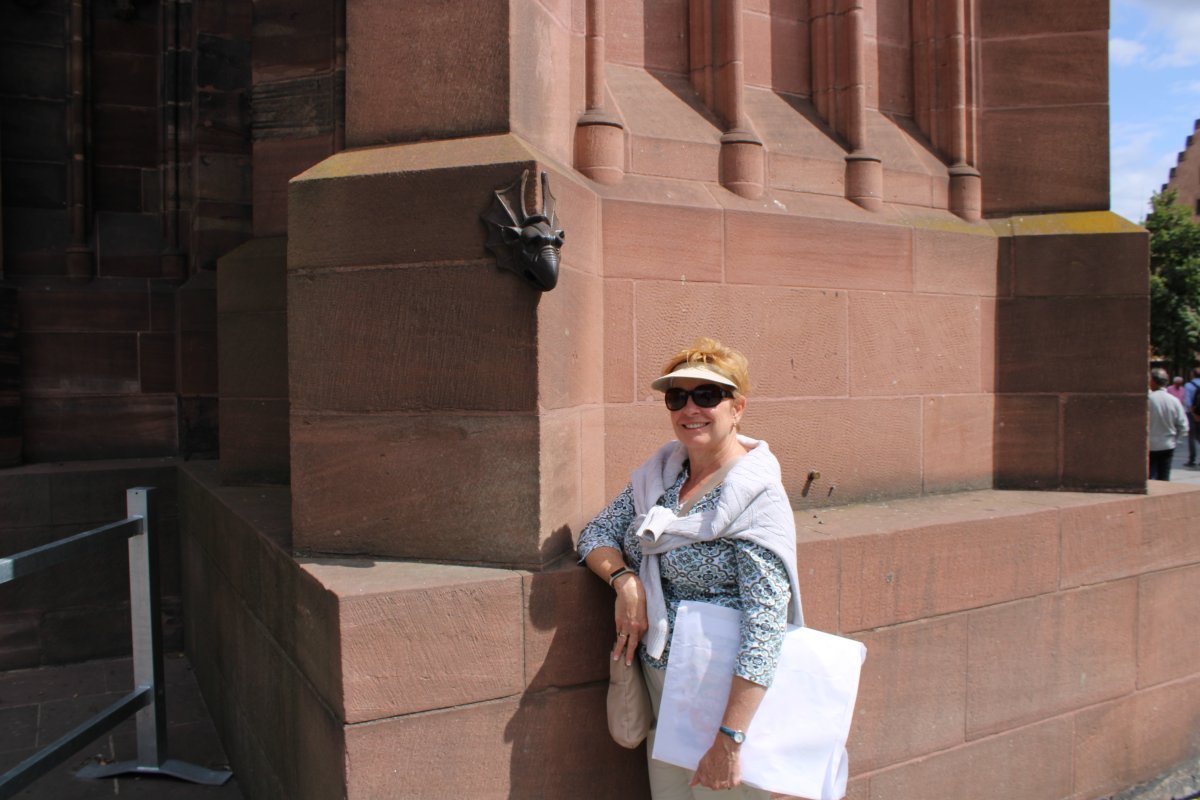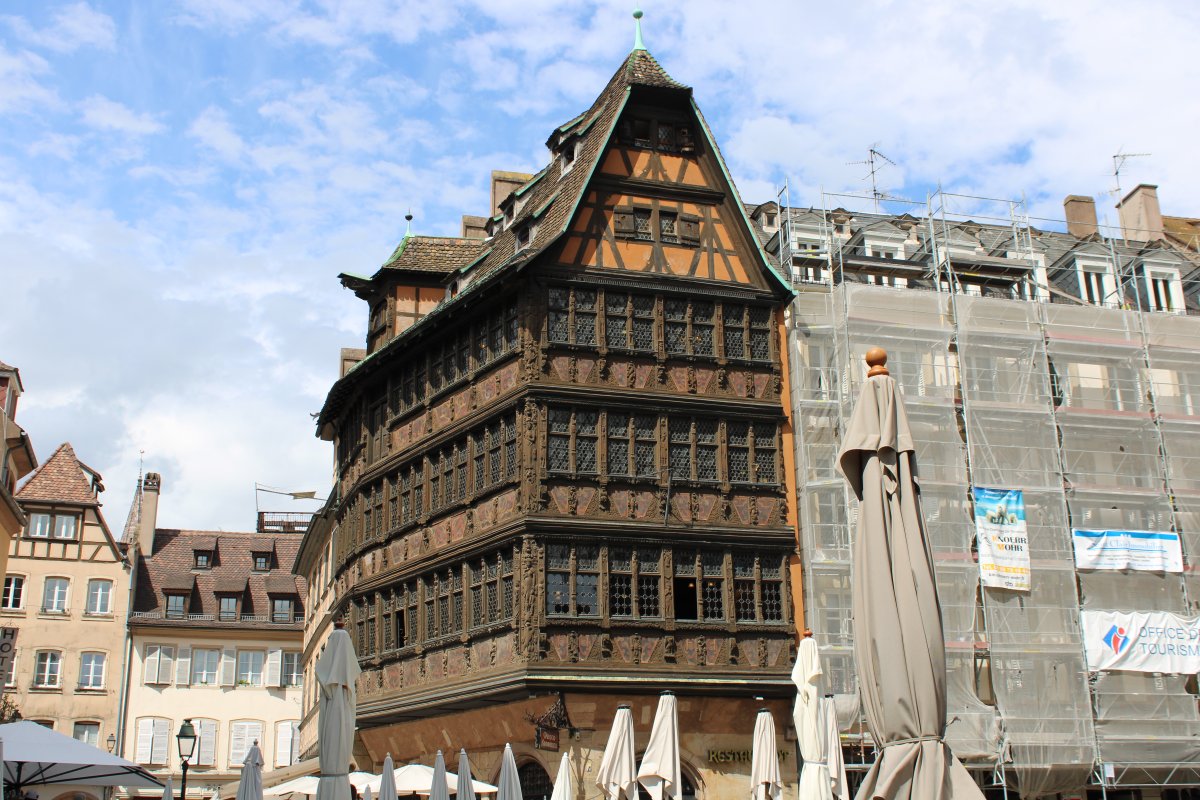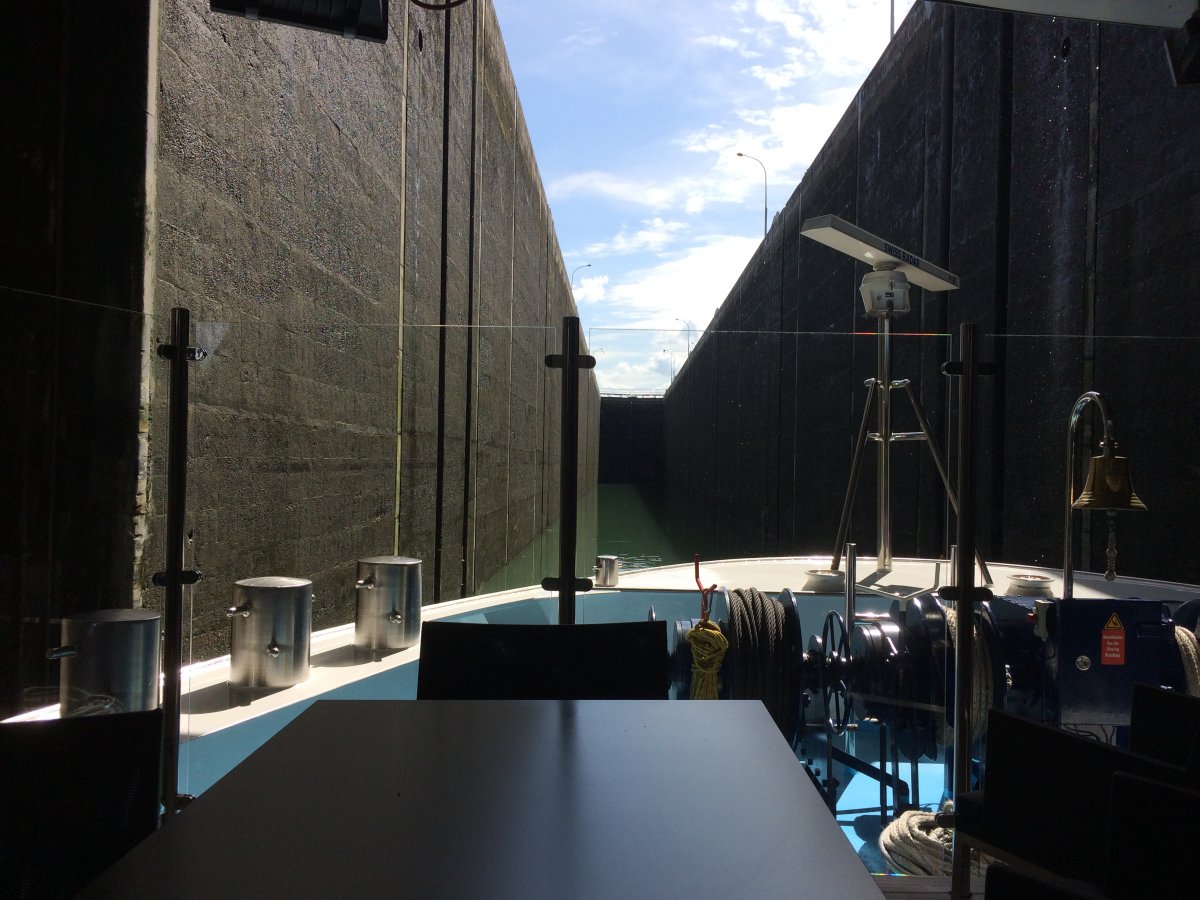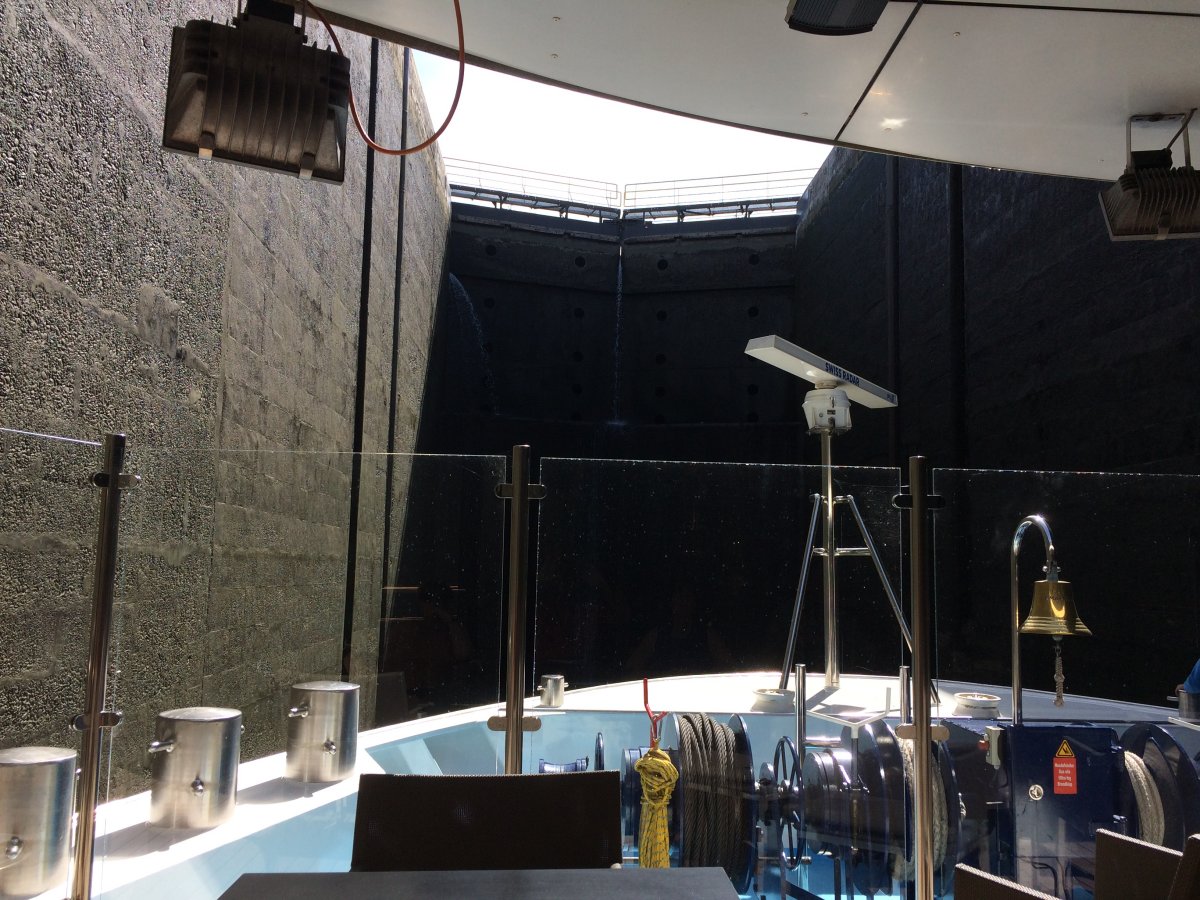Strasbourg - Day 12
The Ama Prima continued south down the Rhine River. At some point we ceased cruising through Germany and France appeared on our right (Germany still on the left). The next day we docked at the French town of Strasbourg. Again we boarded excursion buses which took us into town. Lynnette and I had signed up for the "long" walking tour as opposed to just town center.
We started out at the Parc de l'Orangerie. Here we're walking down a tree-lined promenade.

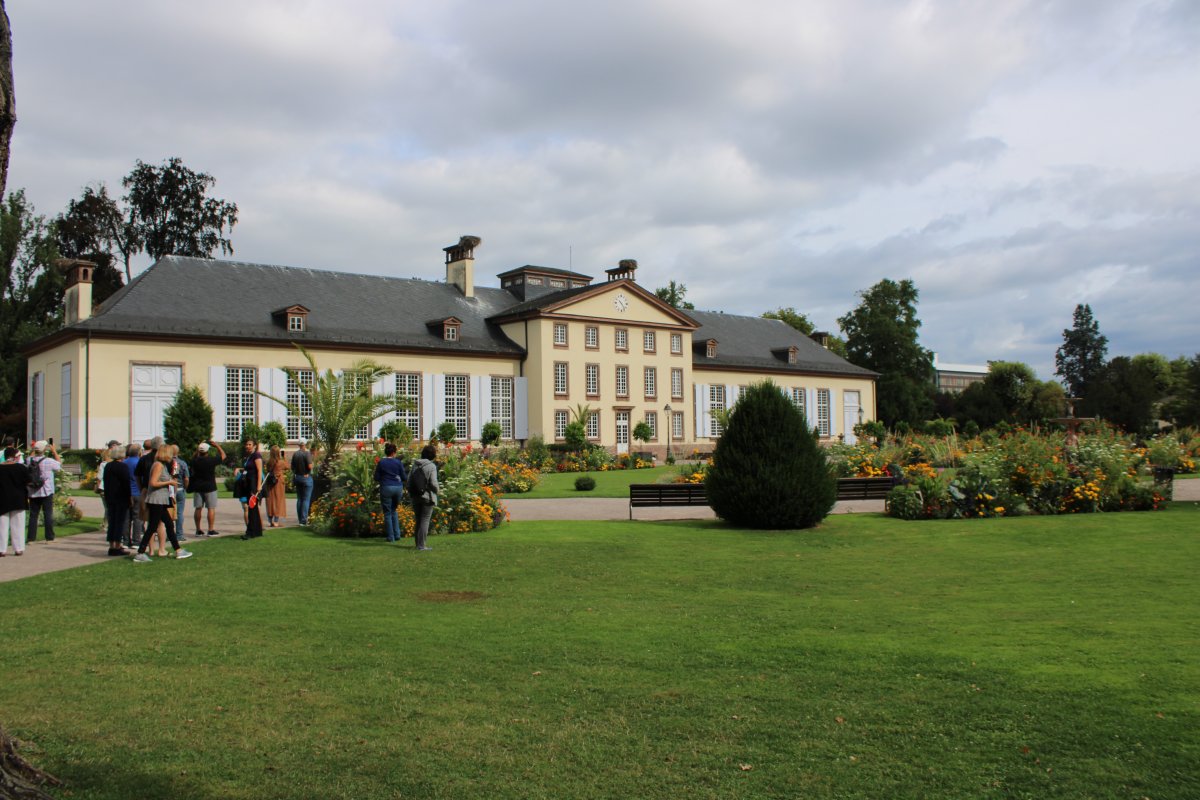
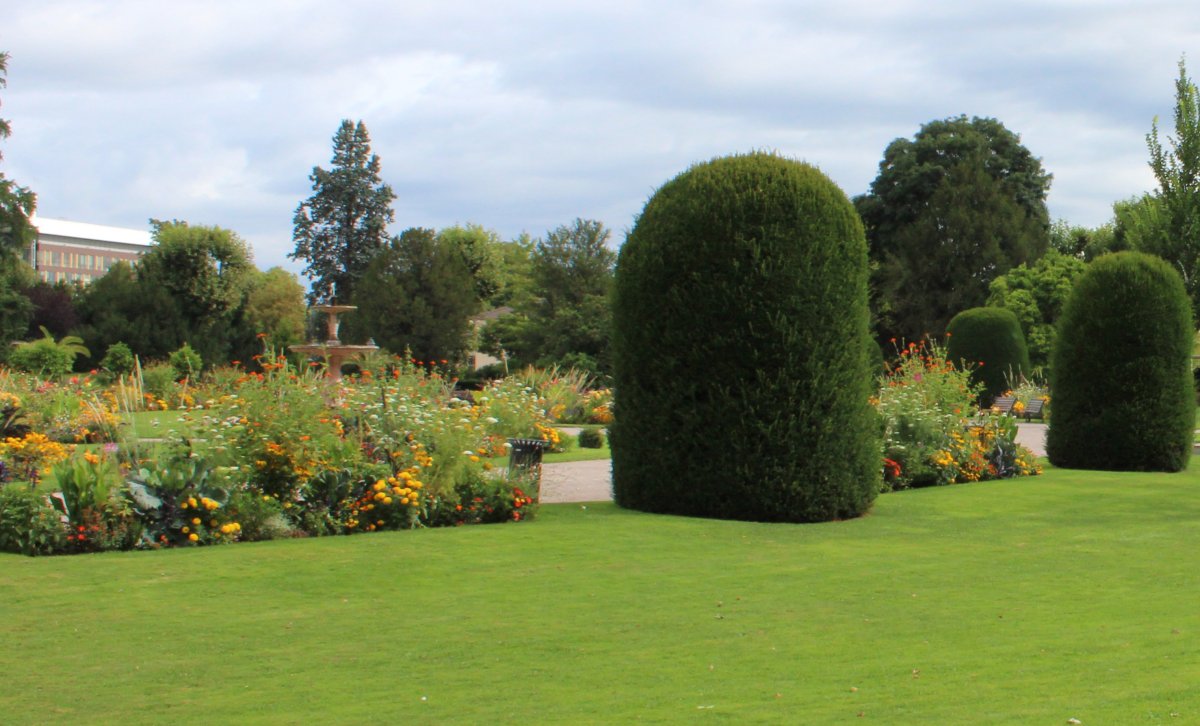
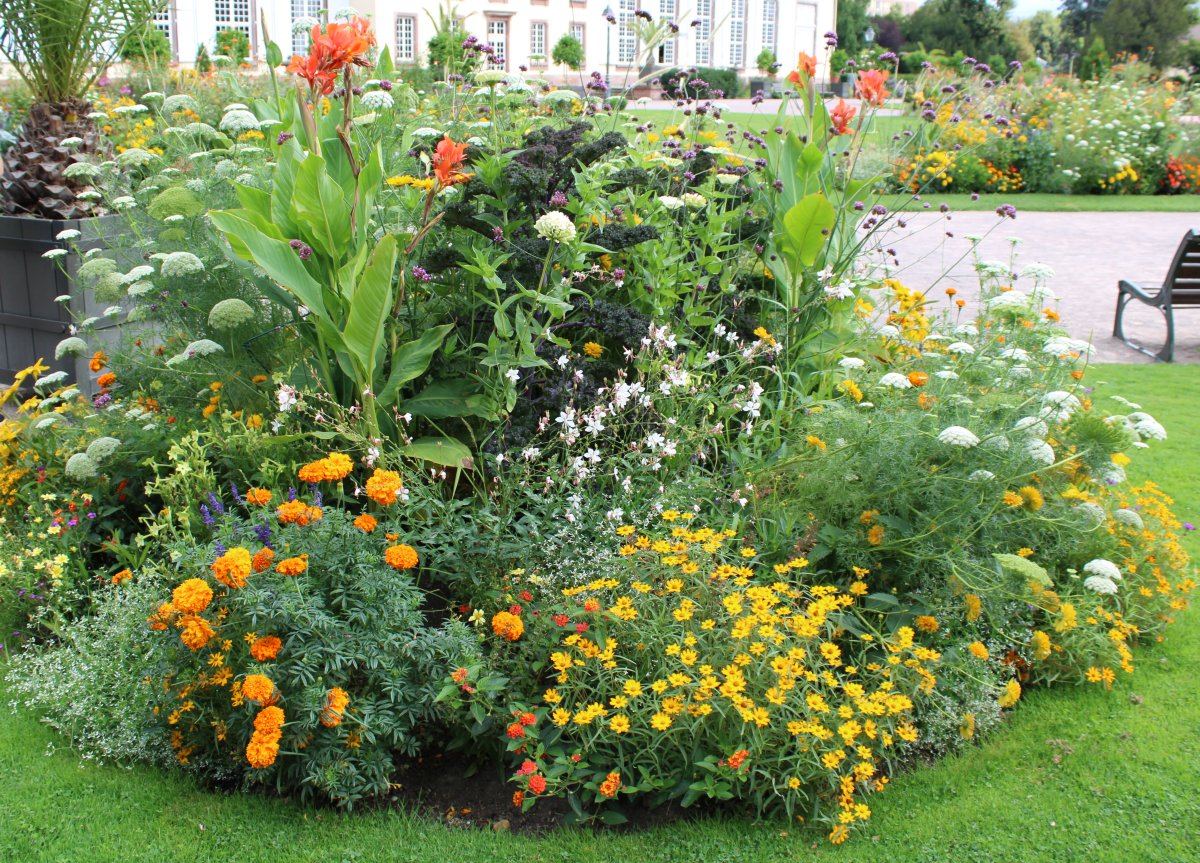
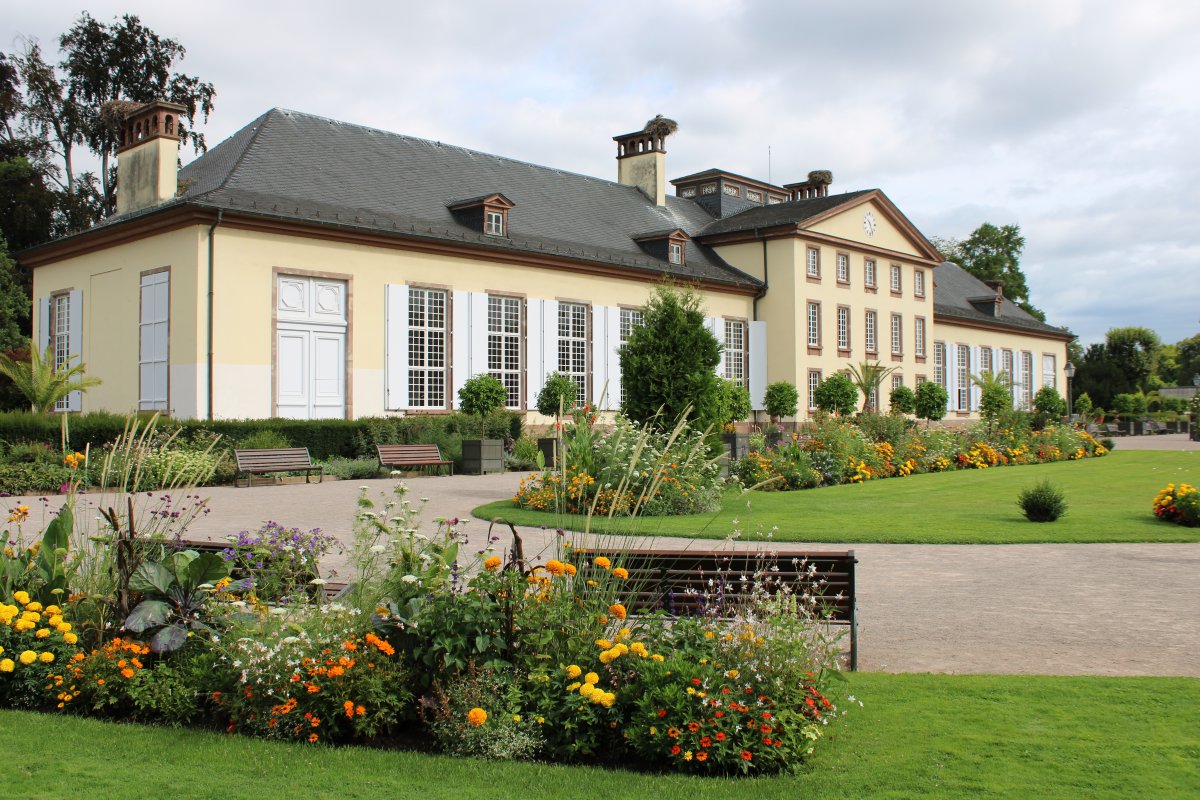
We walked past the Council of Europe building.
The Council of Europe is an international organisation whose stated aim is to uphold human rights, democracy and the rule of law in Europe. Founded in 1949, it has 47 member states. The organisation is distinct from the 27-nation European Union, although it is sometimes confused with it, partly because the EU has adopted the original European Flag which was created by the Council of Europe in 1955, as well as the European Anthem. No country has ever joined the EU without first belonging to the Council of Europe. The Council of Europe cannot make binding laws, but it does have the power to enforce select international agreements reached by European states on various topics. The best known body of the Council of Europe is the European Court of Human Rights, which enforces the European Convention on Human Rights.
Who knew?
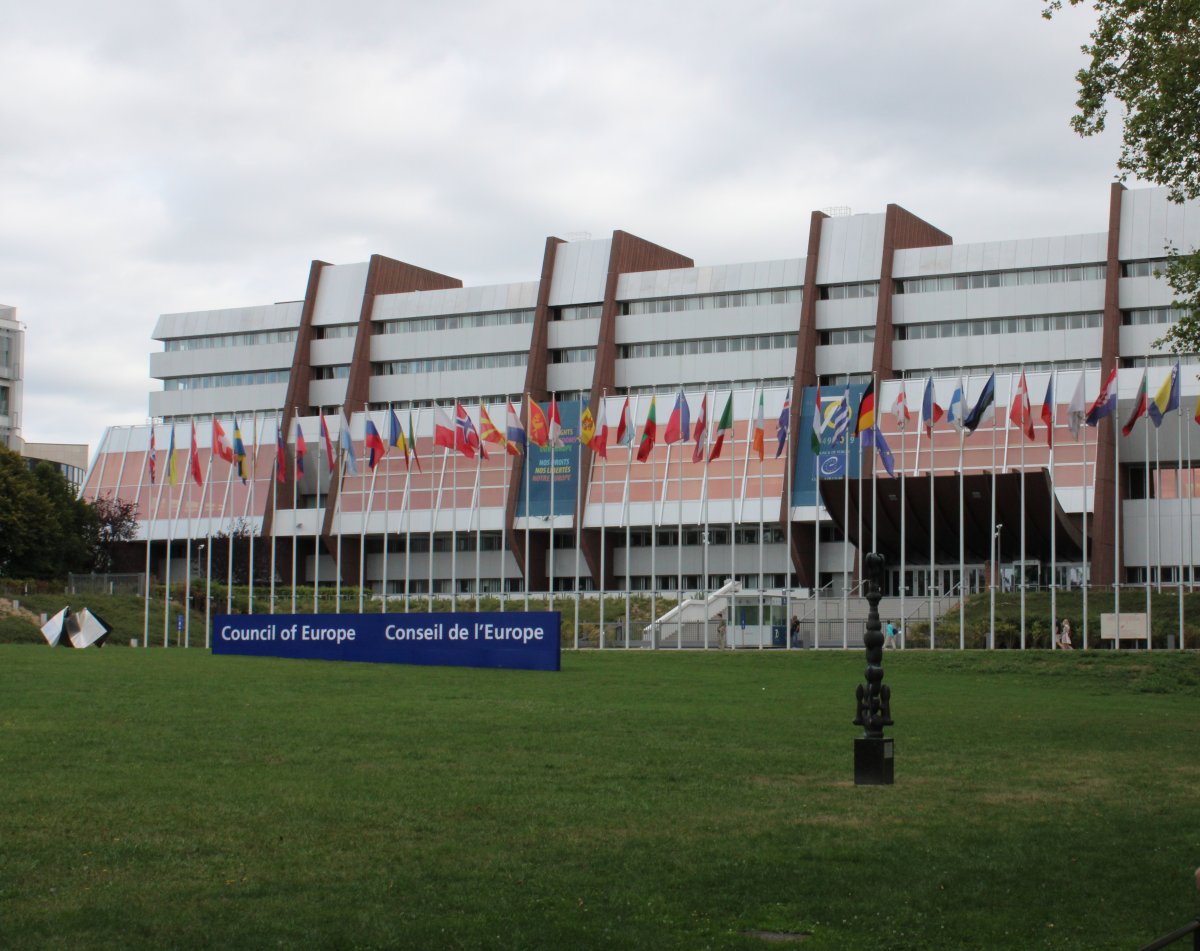
Across the canal was the very modern looking European Parliament building, completed in 1999, and the official seat of the, you guessed it, European Parliament.
The EP is the legislative branch of the European Union and one of its seven institutions. Together with the Council of the European Union, it adopts European legislation, normally on a proposal from the European Commission. The Parliament is composed of 705 members (MEPs). Since 1979, it has been directly elected every five years by European Union citizens, using universal suffrage.
Although the European Parliament has legislative power, as does the Council, it does not formally possess legislative initiative (which is the prerogative of the European Commission), as most national parliaments of European Union member states do. The Parliament is the "first institution" of the EU (mentioned first in the treaties, having ceremonial precedence over all authority at the European level) and shares equal legislative and budgetary powers with the Council (except in a few areas where the special legislative procedures apply). It likewise has equal control over the EU budget. Finally, the European Commission, the executive body of the EU (it exercises executive powers, but no legislative ones other than legislative initiative), is accountable to Parliament.
The European Parliament's headquarters are here, in Strasbourg. Luxembourg City is home to the administrative offices (the "General Secretariat"). Meetings of the whole Parliament ("plenary sessions") take place in Strasbourg and in Brussels. Committee meetings are held in Brussels.
OK, well, I'm glad that's straight. Whatever works for you. Good work if you can get it!
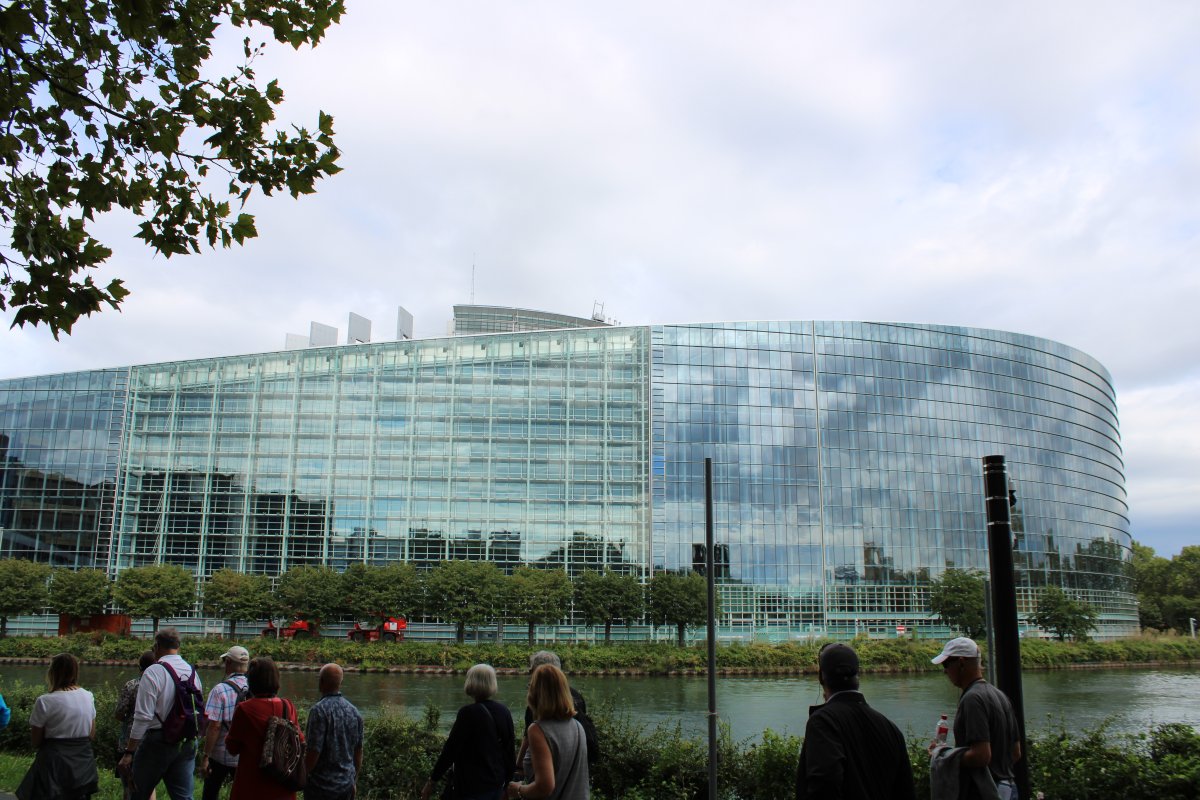
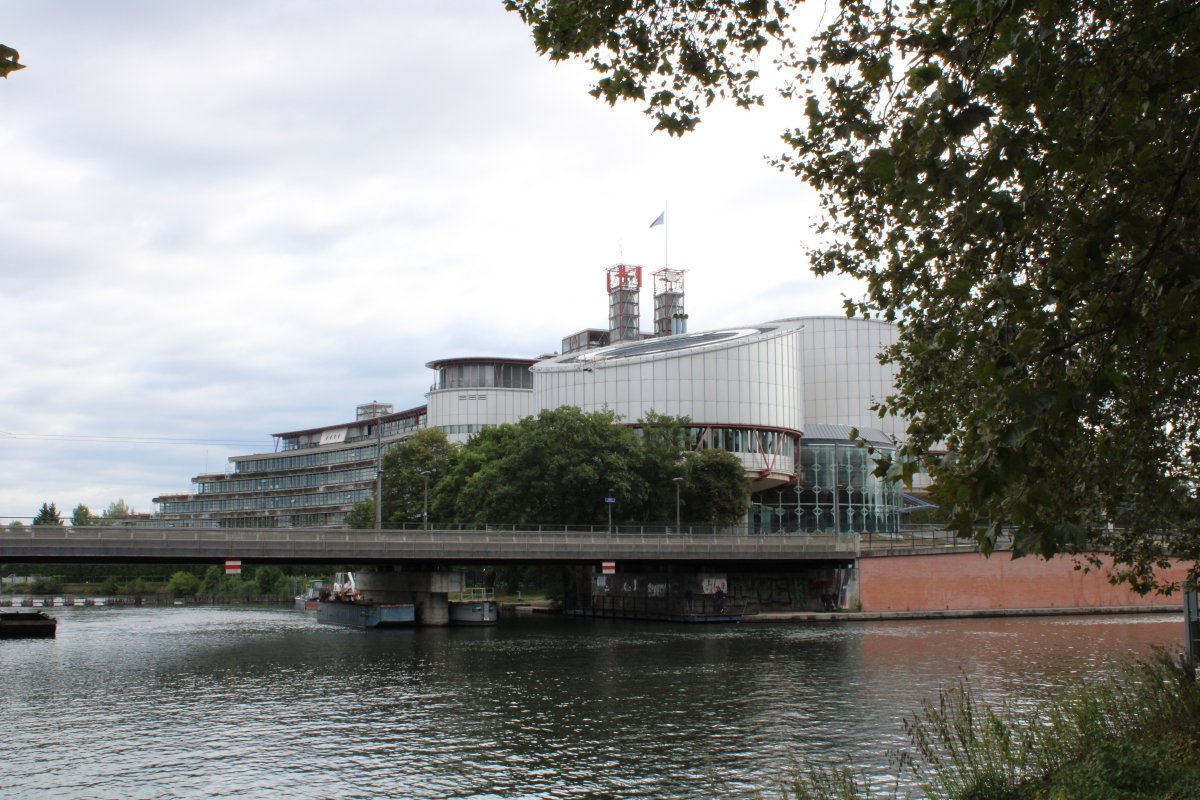
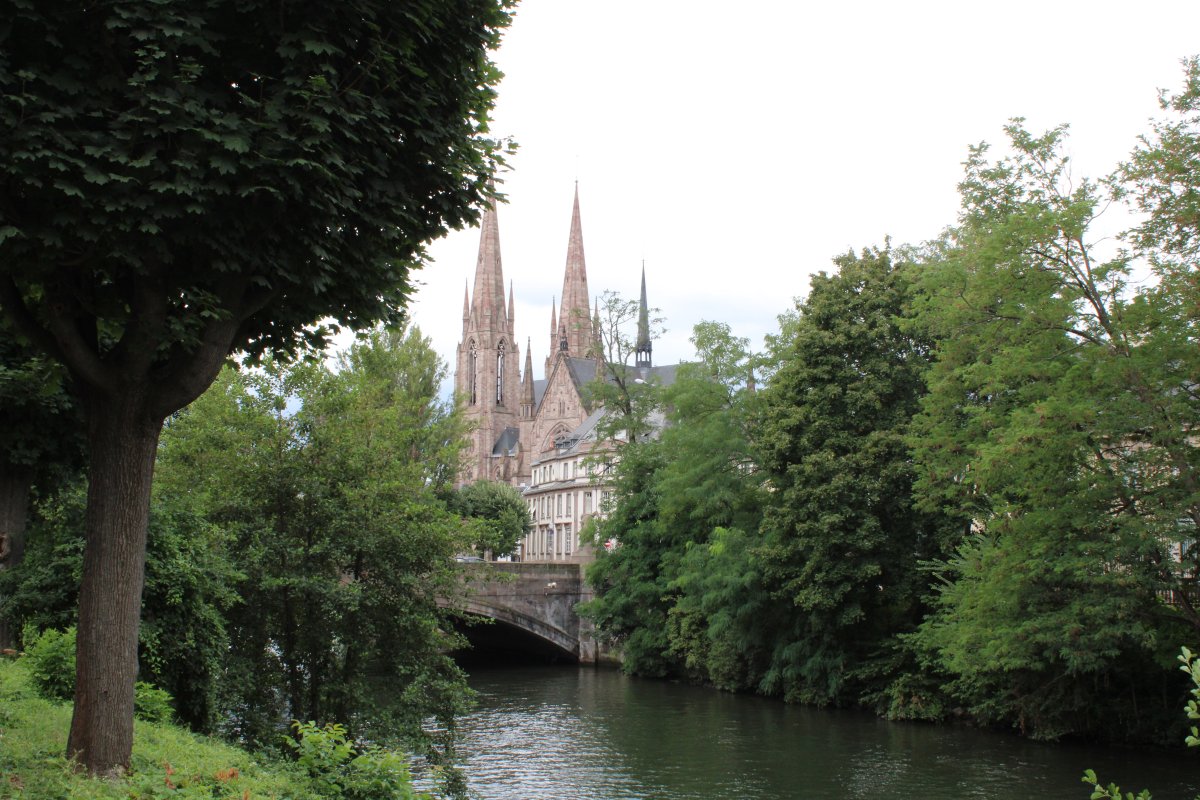
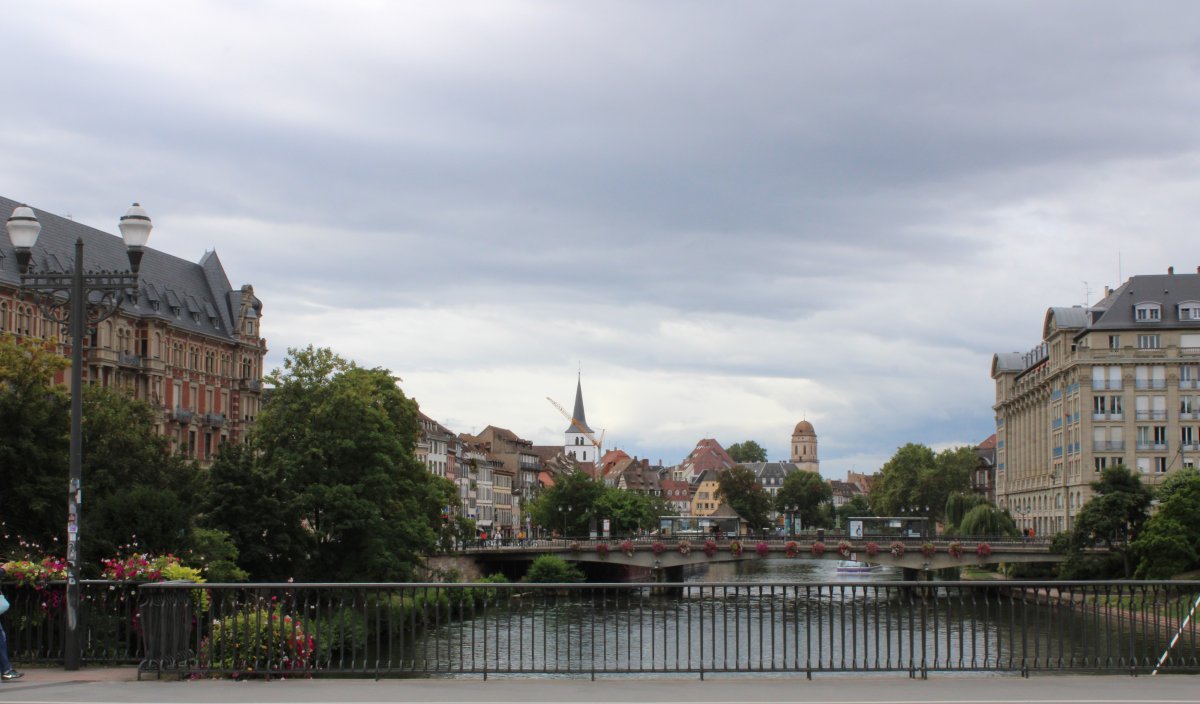
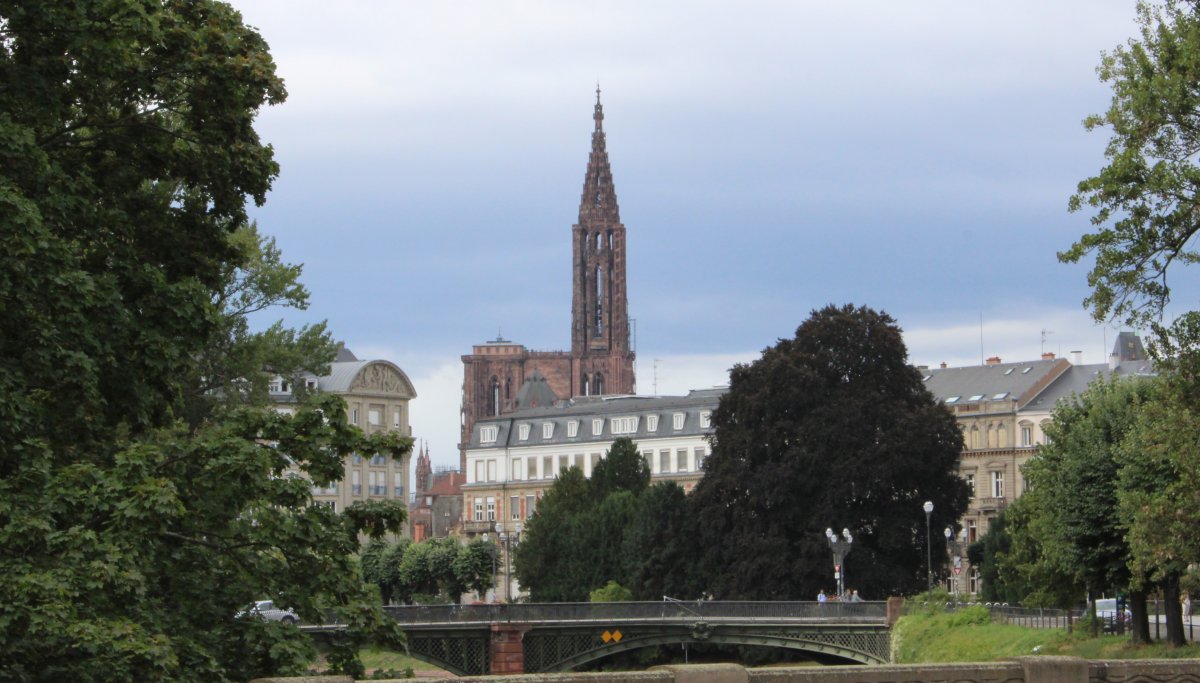

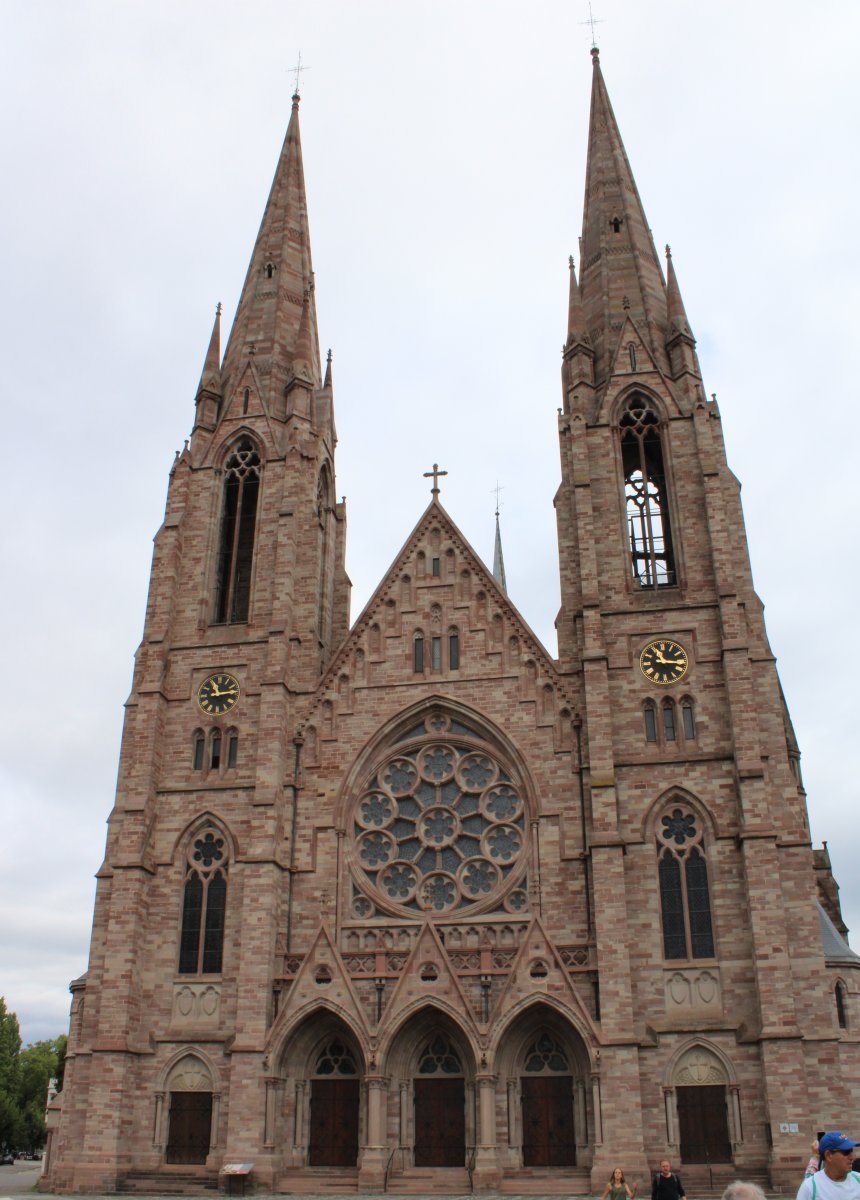
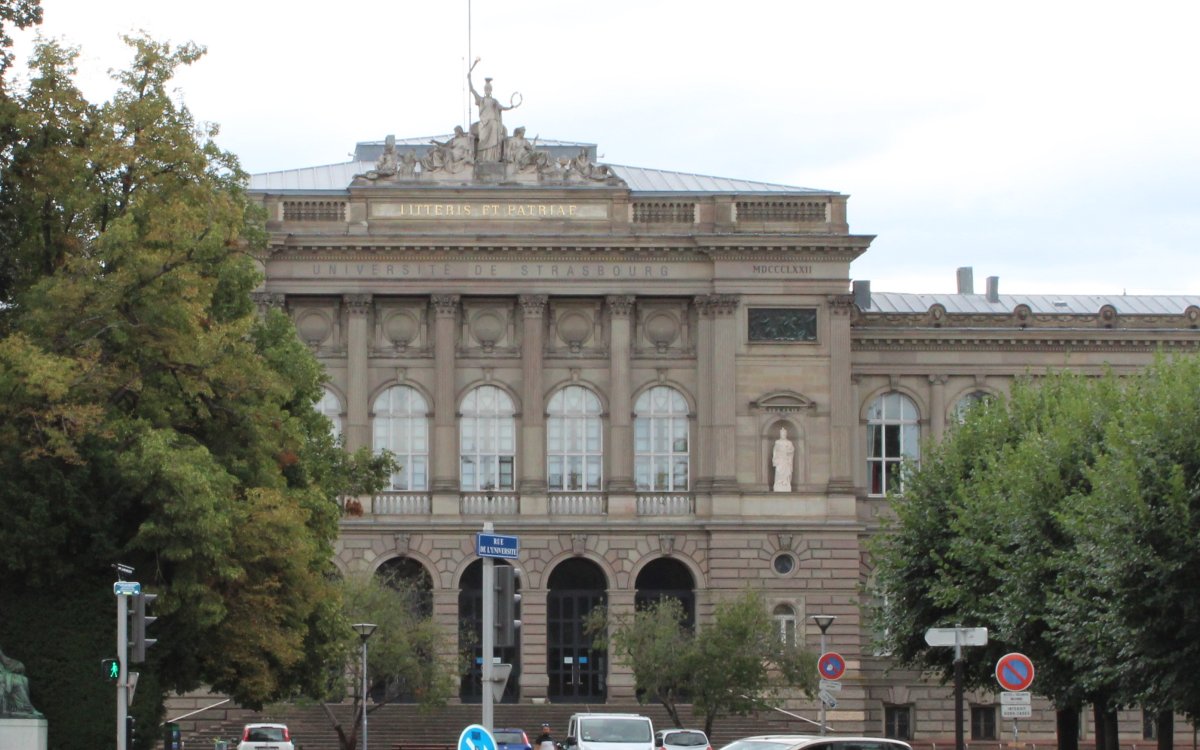
The Palais du Rhin (Palace of the Rhine). Although you can't tell in this picture, it is a large building. It and the surrounding gardens including the Place de la Republique -- the former Kaiserplatz -- are an outstanding landmark of 19th-century Prussian architecture.
After the Franco-Prussian War of 1870–71, Strasbourg, along with the rest of Alsace-Lorraine, was annexed by the German Empire. As the capital of the new German province, Strasbourg was faced with the question of an official residence for the Kaiser. The decision was made to create a building symbolic of imperial power, and after much debate, a square Neo-Renaissance design was chosen, remotely inspired by the Palazzo Pitti in Florence. The architect was Hermann Eggert (1844–1920), who had already built, among other things, the Observatory of Strasbourg.
Work began on March 22, 1884 in honour of Kaiser William I's 87th birthday, and construction took five years. The project received a good deal of criticism, with many questioning the need and use of the building, its appearance, and its high price.
Inaugurated by Kaiser William II in August 1889, the palace housed the emperor for twelve visits down to 1914.
During the First World War, the building was converted into a military hospital. After the city returned to France, in 1920 it adopted its current name when the oldest of the European institutions, the Central Commission for Navigation on the Rhine, moved in.
In 1923, the palace passed hands to the French state and today houses the Direction régionale des affaires culturelles (DRAC) of Grand Est.
Transformed into the Kommandantur by the Nazis during the German occupation of France between 1940 and 1945, the building was recaptured by the troops of General Leclerc, who transformed it into their general headquarters. It was there that he wrote his proclamation announcing the realization of his oath at Kufra, proclaiming that he would fight until the French flag flew again over the cathedrals of Strasbourg and Metz.
The palace was threatened with destruction in the 1970s but survived and is now classified as a monument historique since 1993.
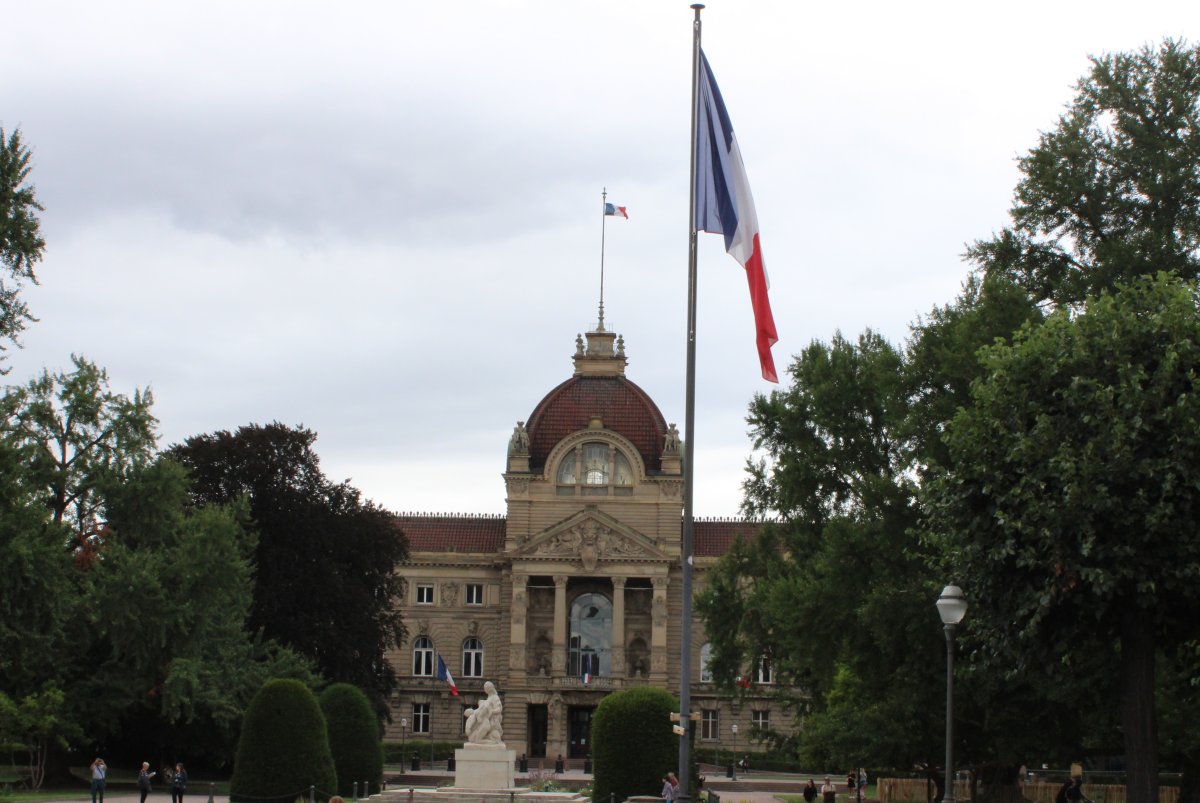
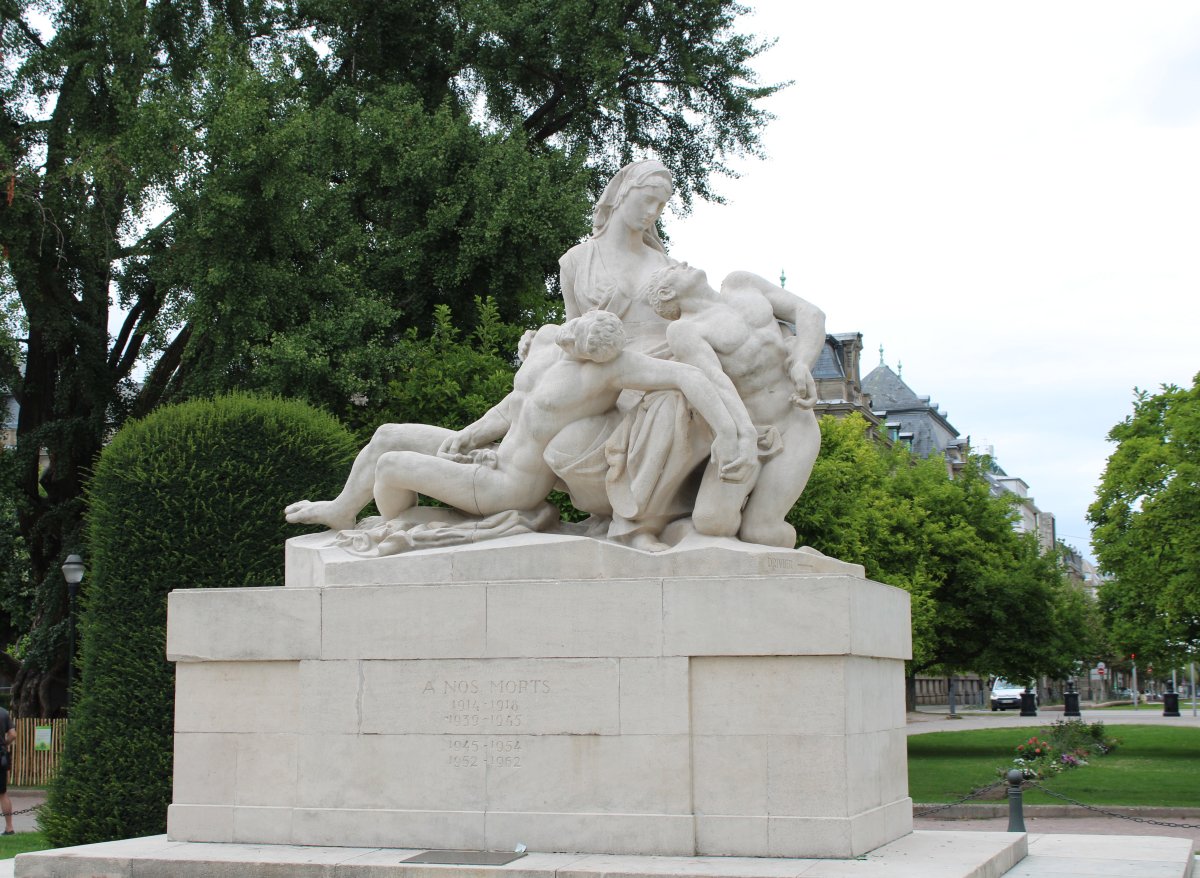
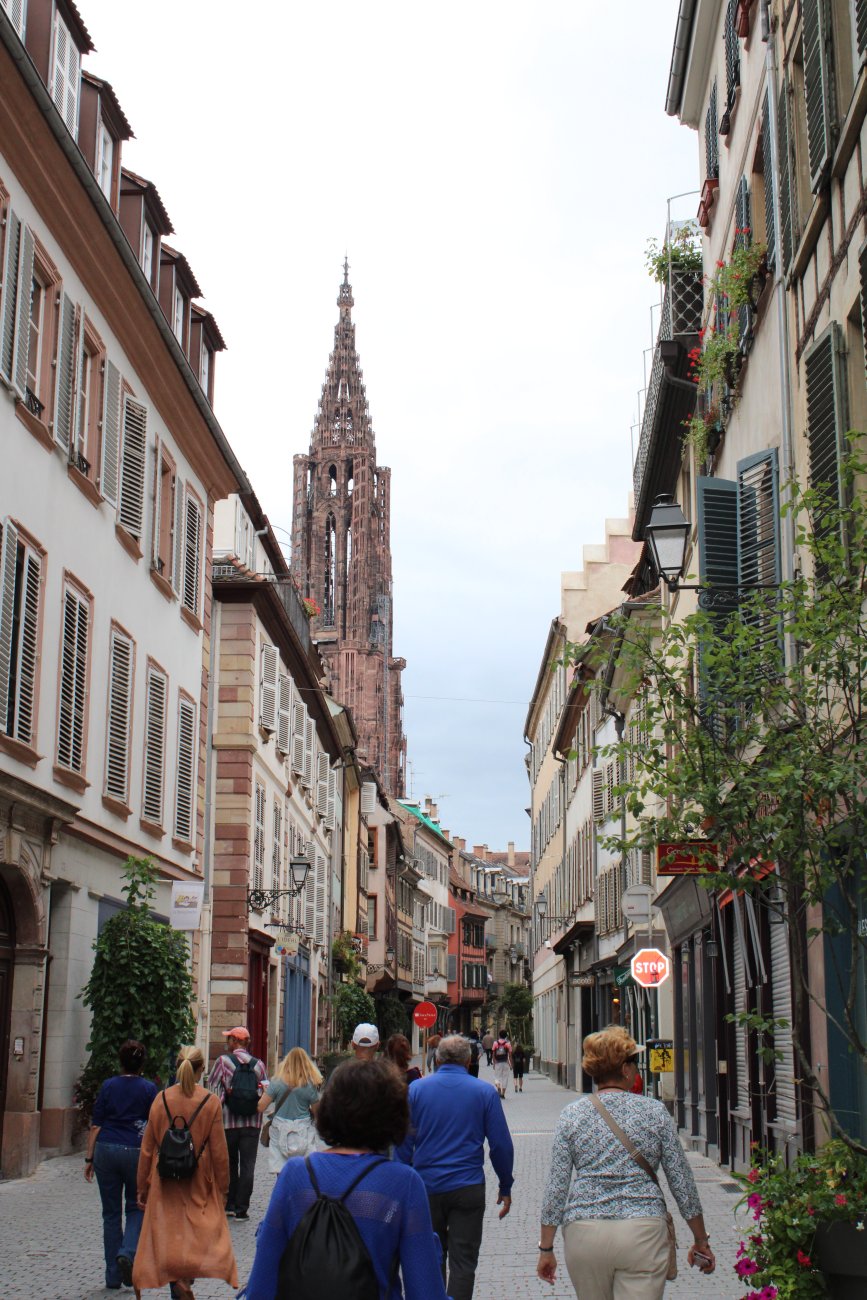
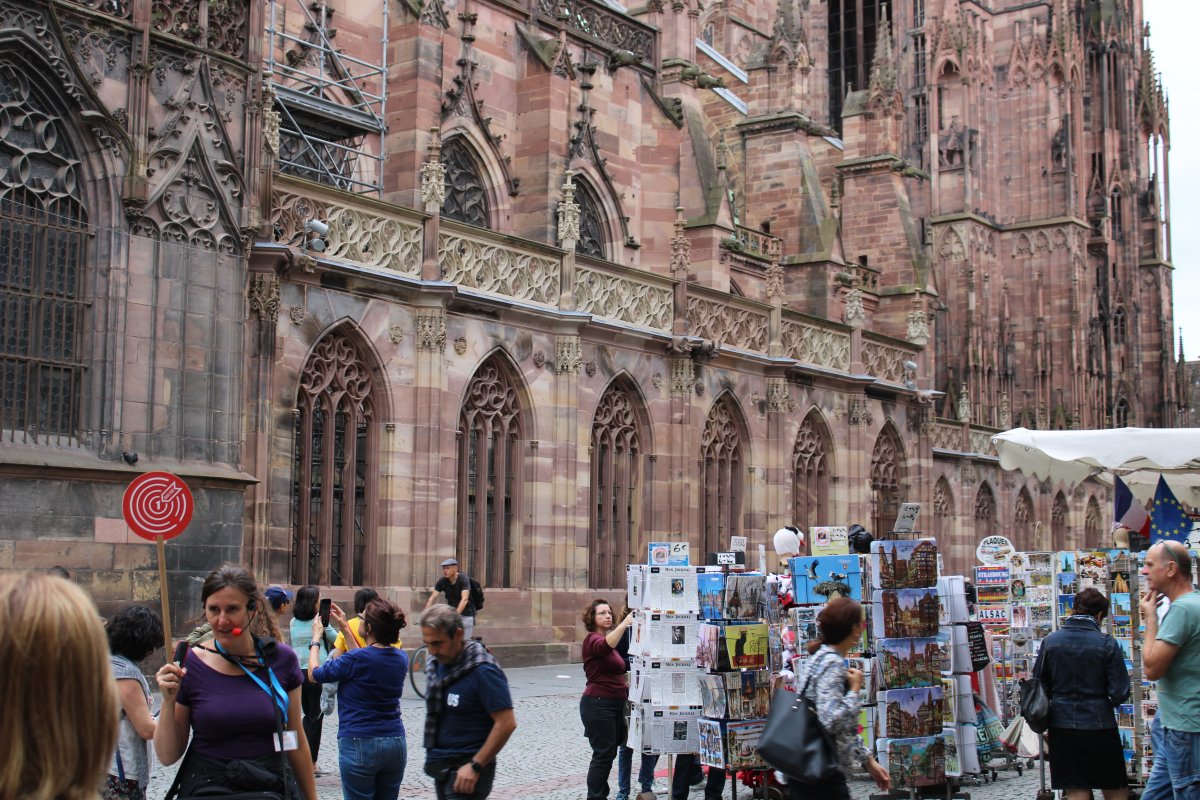
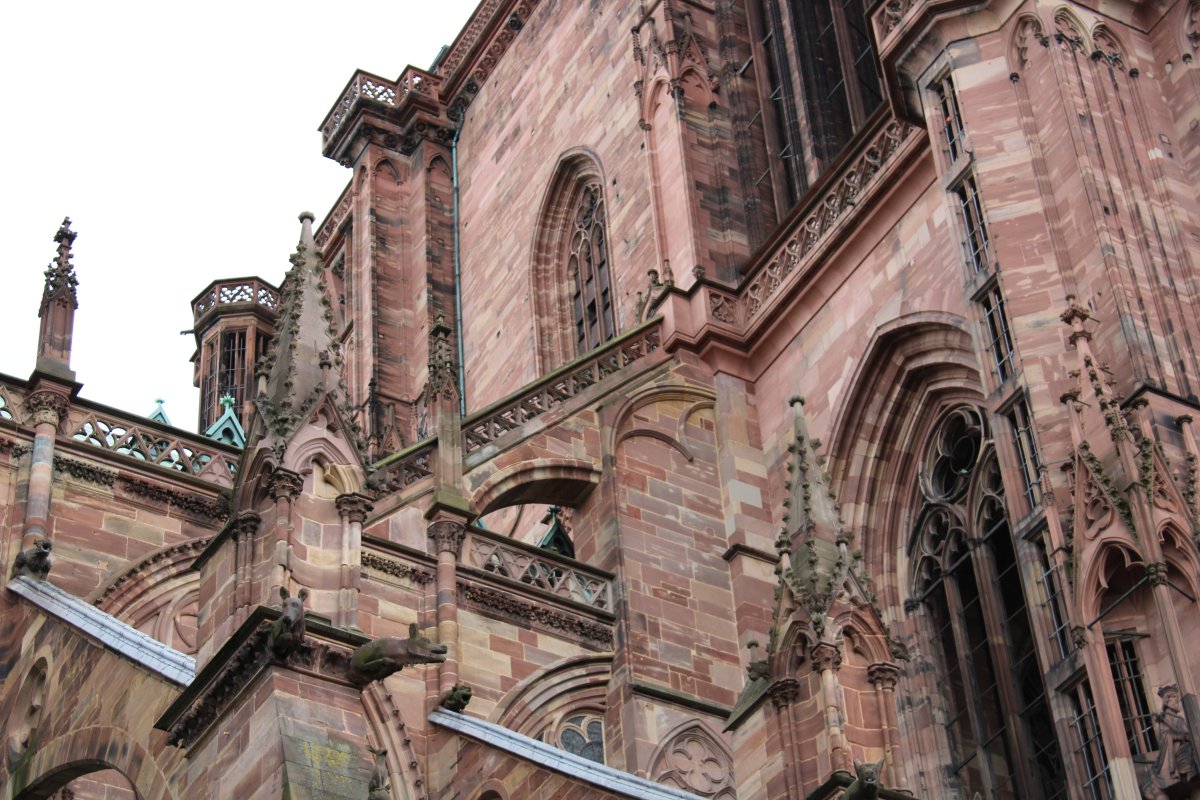
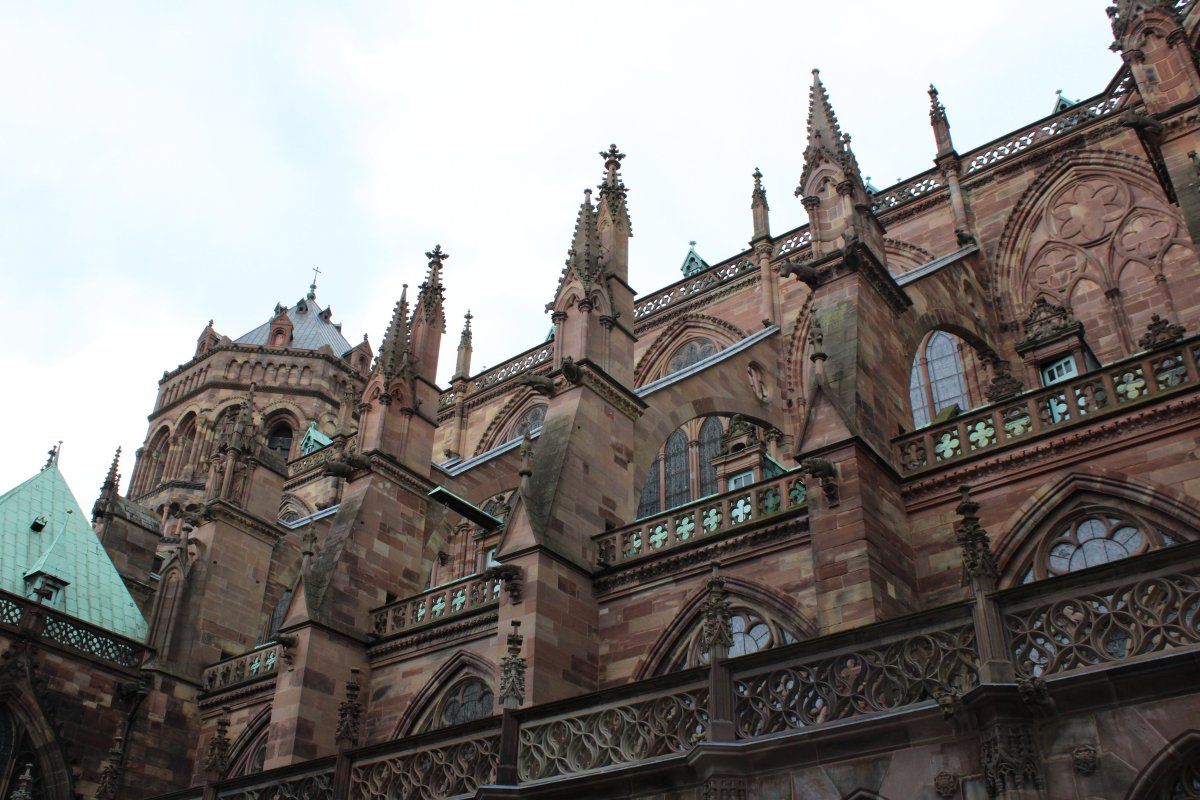

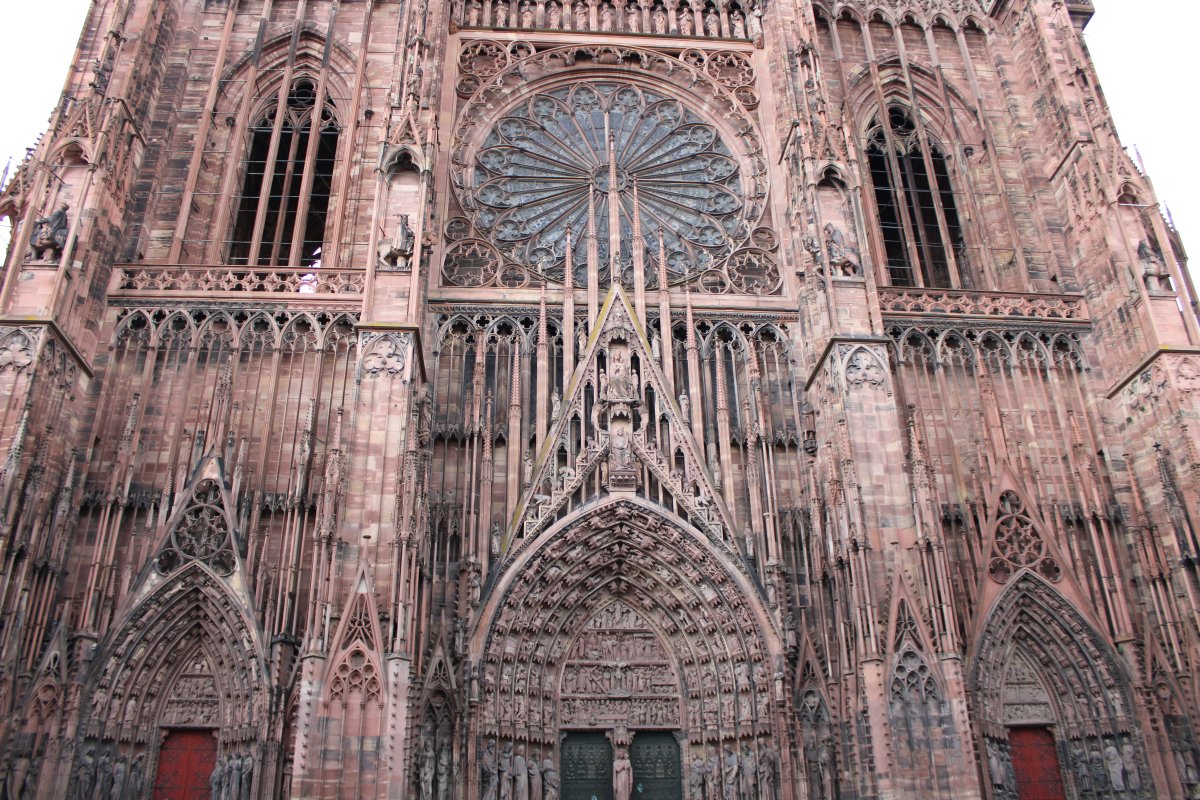
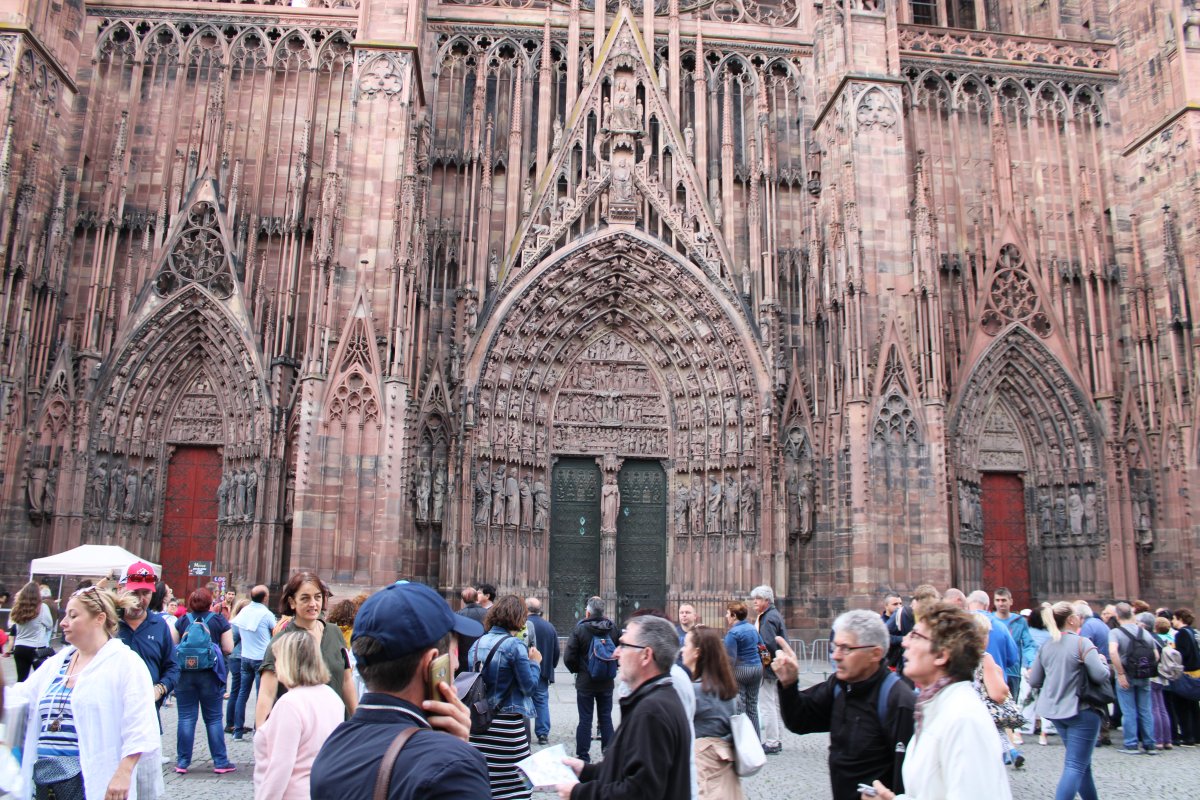
In the siege of Strasbourg during the Franco-Prussian War of 1870, the cathedral was hit by Prussian artillery and the metal cross on the spire was bent.
During World War II, the cathedral was seen as a symbol for both warring parties. Adolf Hitler visited it on 28 June 1940. On 1 March 1941, General Leclerc made the "Oath of Kufra" (serment de Koufra), stating he would "rest the weapons only when our beautiful colours fly again on Strasbourg's cathedral". During WWII the stained glass was removed in 74 cases and stored in a salt mine near Heilbronn, Germany. After the war, it was returned to the cathedral by the Monuments, Fine Arts and Archives section of the United States military.
The cathedral was hit by British and American bombs during air raids on Strasbourg's center on 11 August 1944. In 1956, the Council of Europe donated the famous choir window by Max Ingrand, the "Strasbourg Madonna" (see also Flag of Europe Biblical interpretation). Repairs to war damage were completed only in the early 1990s.
